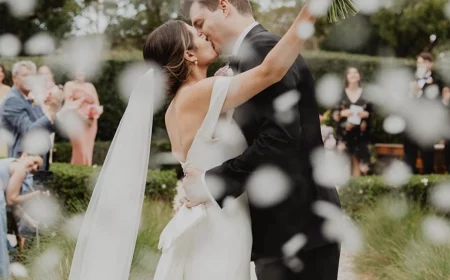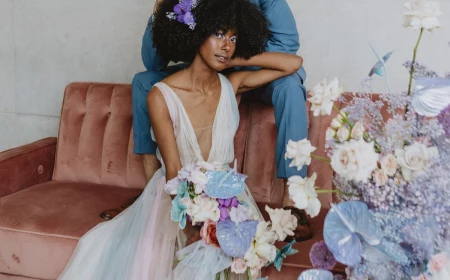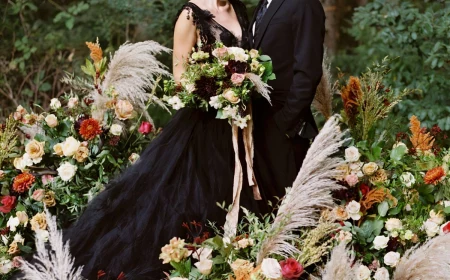The Real-Talk Guide to Finding the Perfect Beach Wedding Dress
So, you’re getting married on a beach. Amazing! I’ve been in the bridal world for a long, long time, and let me tell you, nothing beats the romance of saying “I do” with sand between your toes and the ocean as your soundtrack. It’s a whole vibe.
In this article
But here’s the thing… that beautiful setting comes with its own set of rules. The sun, the humidity, the wind, and the sand itself can turn a dream dress into a bit of a nightmare if you’re not prepared. I’ve seen it all—from gorgeous gowns that felt like personal saunas to delicate trains that ended up weighing an extra five pounds from collecting wet sand. Seriously, that actually happened.
My goal here is to bridge the gap between that perfect Pinterest photo and the beautiful, comfortable reality. We’re going to get into the nitty-gritty of what makes a beach wedding dress work, from the fibers in the fabric to the smartest way to pack it for your flight.
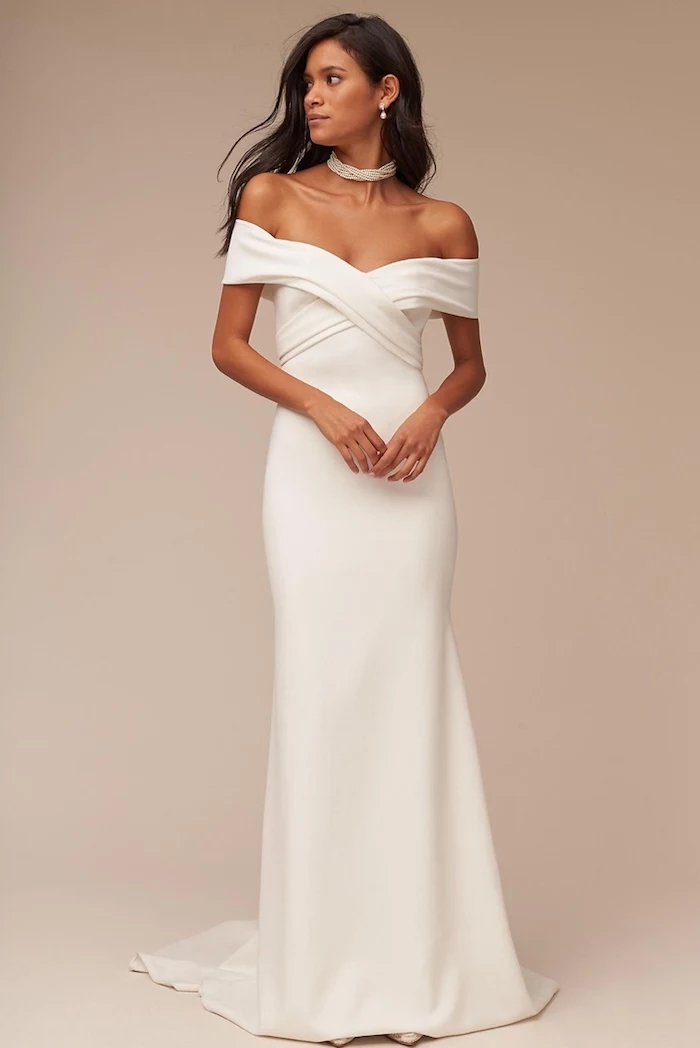
It All Starts with Fabric: Your First and Most Important Choice
Before you even think about silhouettes or styles, we need to talk about fabric. This is, without a doubt, the most critical decision you’ll make. It controls your comfort, how the dress moves in the breeze, and whether you’ll look back at your photos with a smile or just remember how hot you were.
Breathability is Non-Negotiable
When it’s hot and humid, your skin needs to breathe. Natural fibers are almost always your best bet here. They just work better with your body to let heat and moisture escape.
- Lightweight Silks: Think flowy fabrics like chiffon, georgette, or crepe de chine. They are incredibly light and have a beautiful, natural movement that catches the wind perfectly. The downside? Silk can show water spots, so a splash from a wave or even sweat might leave a temporary mark. From a budget perspective, pure silk is a premium choice, often adding a significant cost to a gown.
- Cotton & Lace: High-quality cotton, like a soft voile or a Swiss dot pattern, is a game-changer. It’s super breathable and feels amazing on the skin. This is also where you find beautiful and comfortable lace options, like the more relaxed eyelet or certain floral patterns. It gives off a lovely, less formal feel that’s just perfect for the coast.
- Linen: The ultimate warm-weather fabric for a reason. Linen is exceptionally breathable and just gets softer the more you wear it. Its main characteristic is that it wrinkles very easily, but honestly, that slightly relaxed, perfectly imperfect look can be part of its charm for a laid-back beach ceremony.
And what about synthetics? Polyester chiffon and georgette can look very similar to silk for a fraction of the price (a big win for the budget!) and are more resistant to wrinkles. But—and this is a big but—they don’t breathe. They’re essentially a form of plastic. If you go this route, make sure the dress has a very open, airy design and isn’t weighed down with too many layers. Oh, and ALWAYS check the lining…
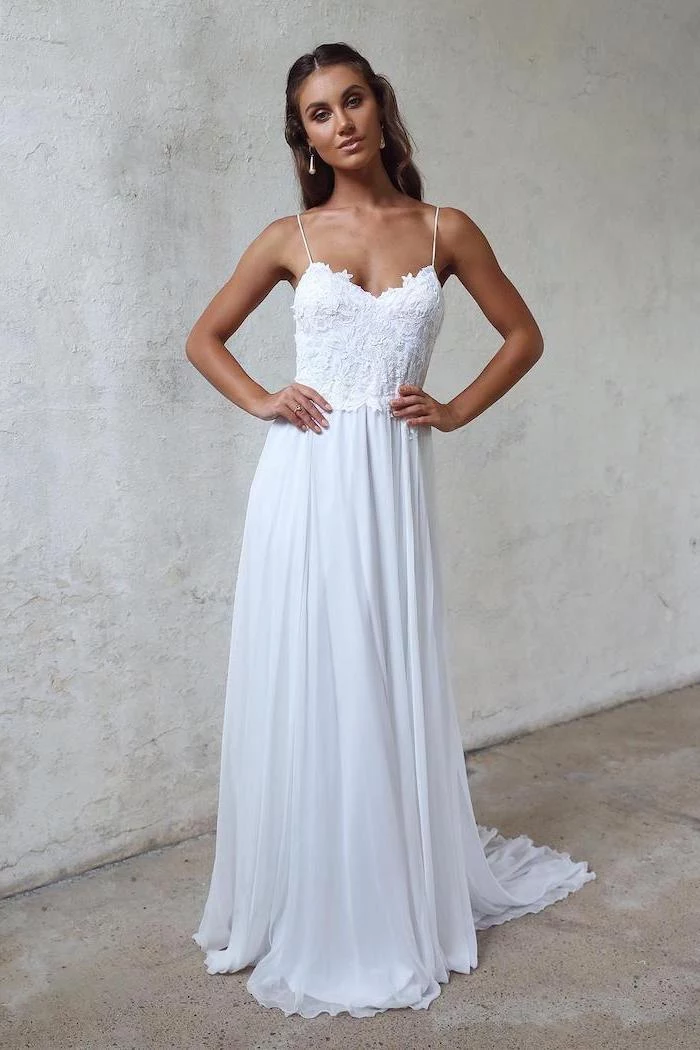
The Hidden Enemy: Your Dress Lining
This is a pro tip, so listen up! I’ve seen the most beautiful, breezy silk dresses completely ruined by a thick, cheap polyester satin lining. It traps heat and sweat against your body and you’ll be miserable. When you’re dress shopping, feel the inside of the dress first.
Look for linings made of cotton voile, silk habotai, or a lightweight charmeuse. If you find a dress you absolutely love but it has a bad lining, a good seamstress can often replace it. Heads up, this isn’t a minor tweak. Expect this to add anywhere from $200 to over $500 to your alterations budget, but trust me, it’s the best money you’ll spend on your comfort.
Silhouettes That Go With the Flow
The best beach wedding dresses work with the environment, not against it. You want something that allows for movement and embraces the coastal wind as a feature, not a bug.
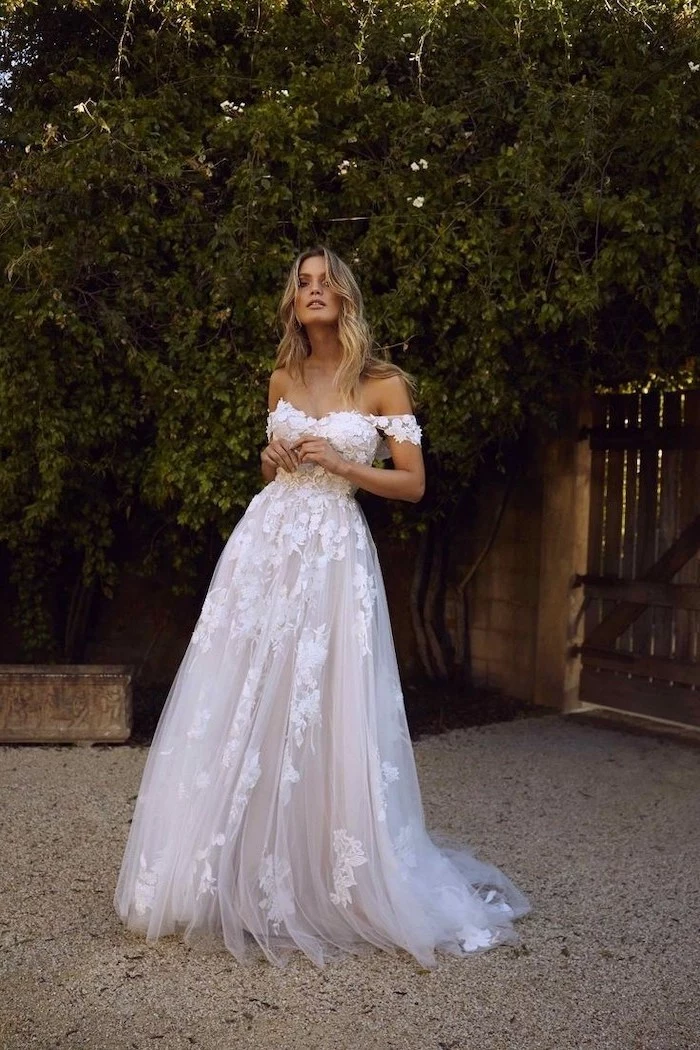
- A-Line: A classic for a reason. It’s fitted through the bodice and then flares out gently. It’s universally flattering and a soft A-line in chiffon will look absolutely stunning as it catches the breeze.
- Sheath/Column: This style is modern, elegant, and follows your body’s natural line. A sheath made from a fluid crepe is a showstopper. A little secret? Look for one with a slit. It adds drama and is incredibly practical for walking on uneven sand.
- Empire Waist: This Grecian-inspired style has a high waistline right below the bust, with the fabric flowing down from there. It’s incredibly comfortable and excellent for keeping you cool since it doesn’t cling to your waist or hips.
- Tea-Length or Short: Want to eliminate all worries about sand and water? Go short! A shorter hemline is the most practical choice and brings a fun, playful energy. You can dip your toes in the ocean without a second thought.
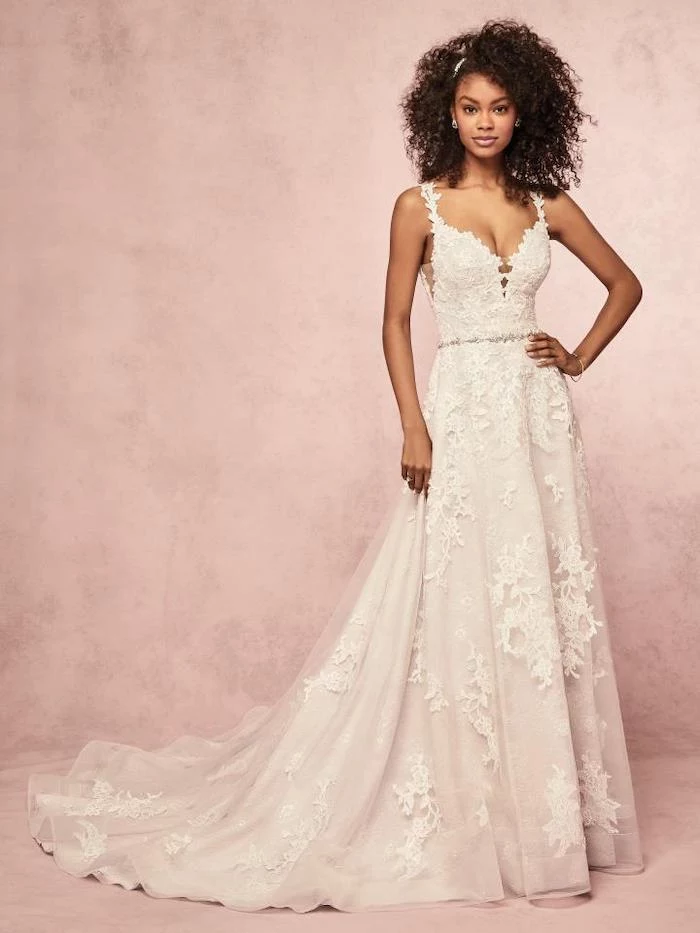
Let’s Talk Accessories: Veils, Shoes, and More
Your accessories need to be beach-smart, too.
A cathedral-length veil might look incredible in a church, but on a windy beach, it can quickly turn into a tangled mess. Consider a shorter birdcage veil, an embellished clip, a flower crown, or just weaving some fresh flowers into your hair. It’s all about working with the wind, not fighting it.
For shoes, stilettos are obviously out. If you’re having an aisle runner, a wedge or a block heel can work beautifully. Otherwise, consider some elegant flat sandals, embellished barefoot sandals (which are basically jewelry for your feet), or just go barefoot! Just be sure to have your shoes—or lack thereof—for your hem alteration.
The Nitty-Gritty: Alterations and Getting Your Dress There
Almost every dress needs alterations, but a beach gown has unique needs. Find a seamstress who has experience with delicate, lightweight fabrics. Don’t be afraid to ask to see their work on chiffon or crepe.
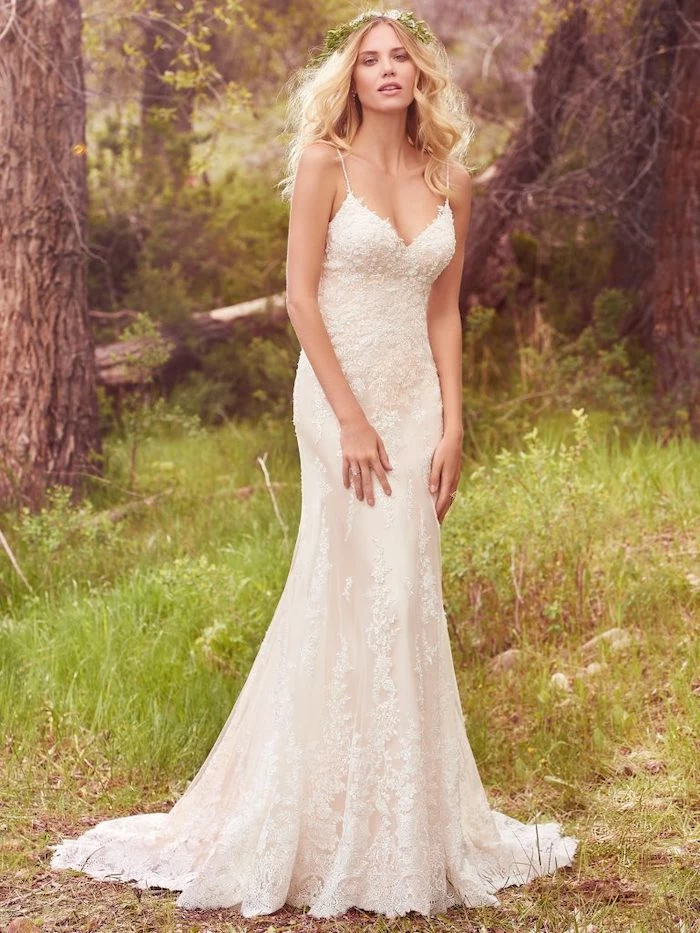
For the hem, I always recommend a length that just skims the top of the sand. A dress that puddles on the ground will collect sand and moisture, getting heavy and dirty before you even say your vows.
And the bustle? A traditional, complicated bustle is a sand trap waiting to happen. The best options are a simple, single-point bustle or, my personal favorite, a wrist loop. It’s a small, discreet loop on the underside of the train that you can slip over your wrist to easily lift your train while you walk. Or, even better, choose a dress with a short “sweep” train or no train at all.
Getting Your Dress to the Destination
Okay, so how do you get this precious cargo to the beach? Whatever you do, DO NOT check your wedding dress. It’s your carry-on, period. Invest in a good-quality, tri-fold garment bag. When you board the plane, ask a flight attendant very nicely if there is a closet where you can hang it. Most of the time, they are happy to help a bride-to-be.
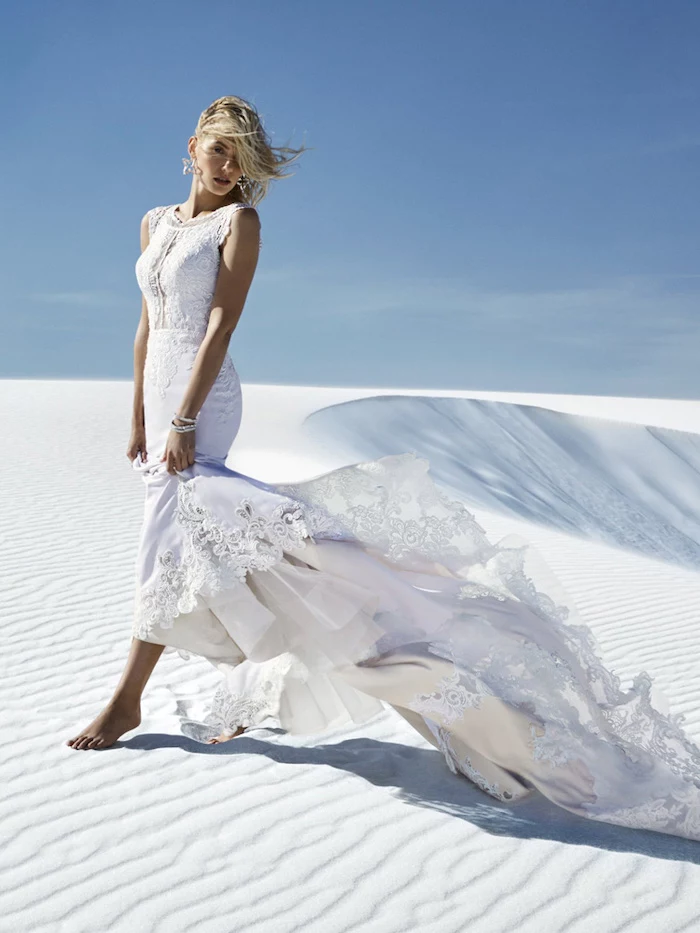
Once you arrive, hang it up immediately. Most hotels have steamers you can borrow or rent, which is the best way to release any travel wrinkles.
Your Beach Wedding Dress Timeline
For a destination wedding, you need to plan a bit further ahead. Here’s a rough guide:
- 10-12 Months Out: Start shopping! This gives you plenty of time to explore without pressure.
- 8-9 Months Out: Place your order. Most gowns take several months to be made and delivered.
- 3-4 Months Out: Your dress has arrived! Now it’s time to book your first fitting with a seamstress. Bring your shoes!
- 1-2 Months Out: Final fitting. Your dress should be perfect and ready to be packed.
Day-Of Prep and Aftercare
On the big day, sunscreen is your best friend. Opt for a high-SPF, non-greasy mineral formula and apply it at least 30 minutes before you put on your dress to let it soak in and prevent stains.
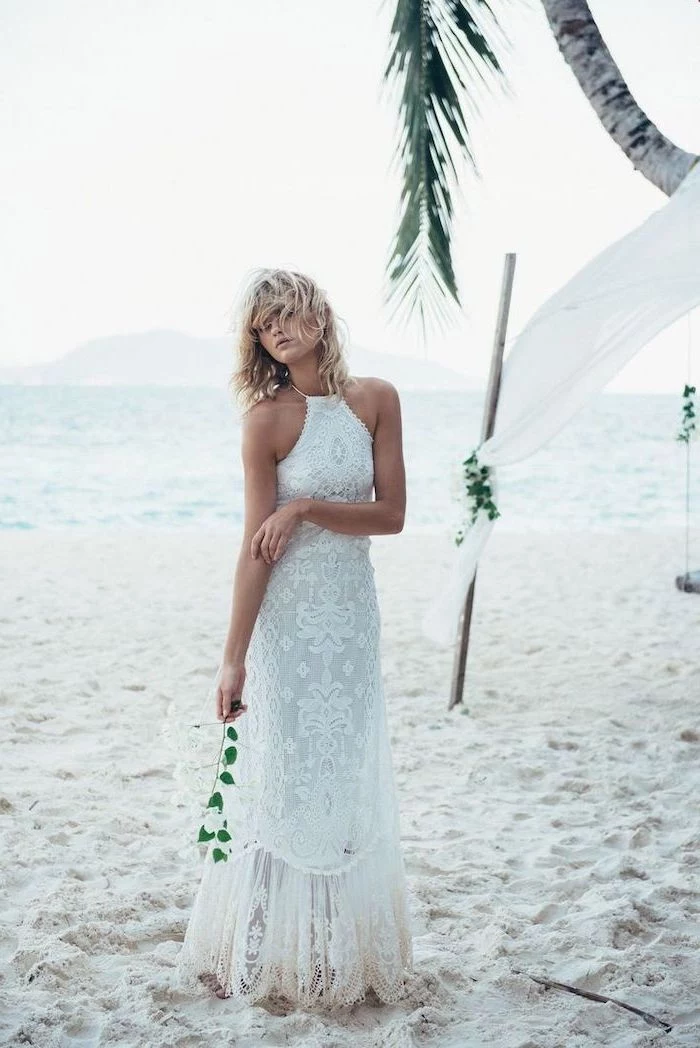
Quick Tip: Beach Bride Emergency Kit
Have a bridesmaid hold onto a small bag with these essentials:
- Mineral-based sunscreen for touch-ups.
- A small bottle of baby powder (it’s magic for removing sticky sand from your skin!).
- A few safety pins for any unexpected wardrobe issues.
- A bottle of water. Stay hydrated!
After the wedding, you need to act fast. Take your dress to a professional cleaner who specializes in gown preservation within a few days. Make sure to tell them it was a beach wedding—they need to do a special desalting rinse to prevent the fabric from corroding over time. This isn’t cheap, often running between $250 and $750, but it’s the only way to ensure your dress lasts.
At the end of the day, choosing your beach wedding dress should be fun. The goal is to find something that makes you feel beautiful, comfortable, and completely yourself. Trust your gut, prioritize how you feel, and you’ll find the one.
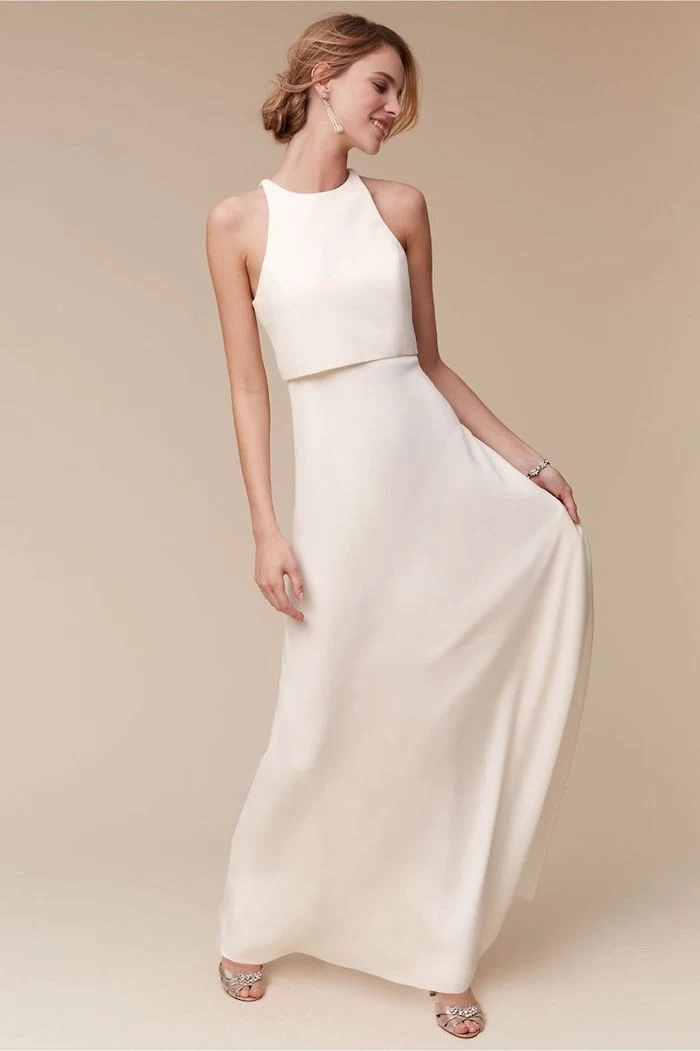
Inspiration Gallery
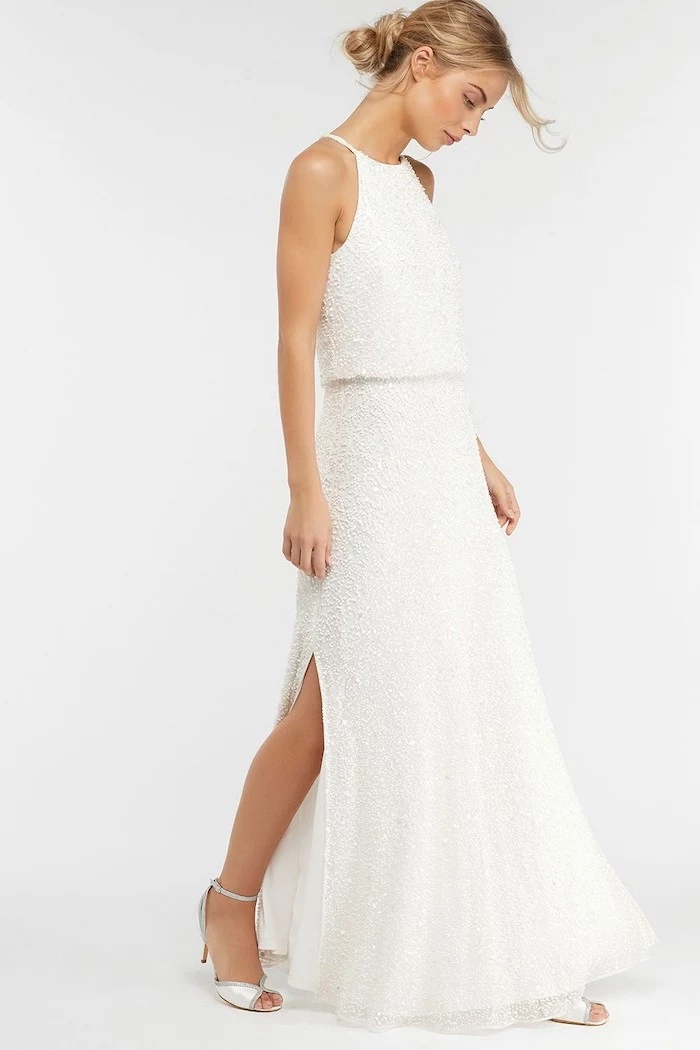
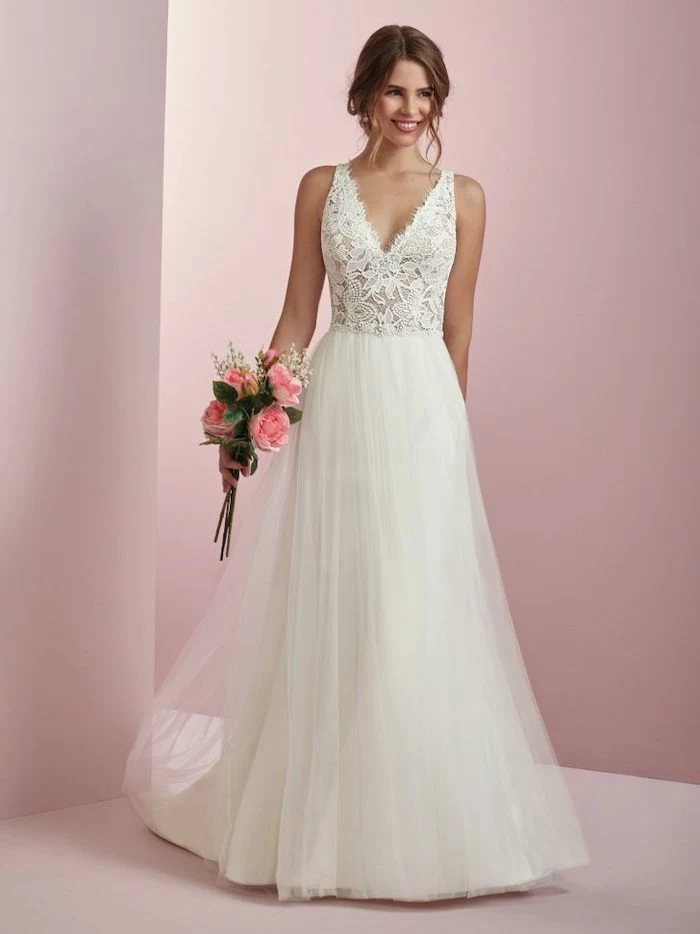
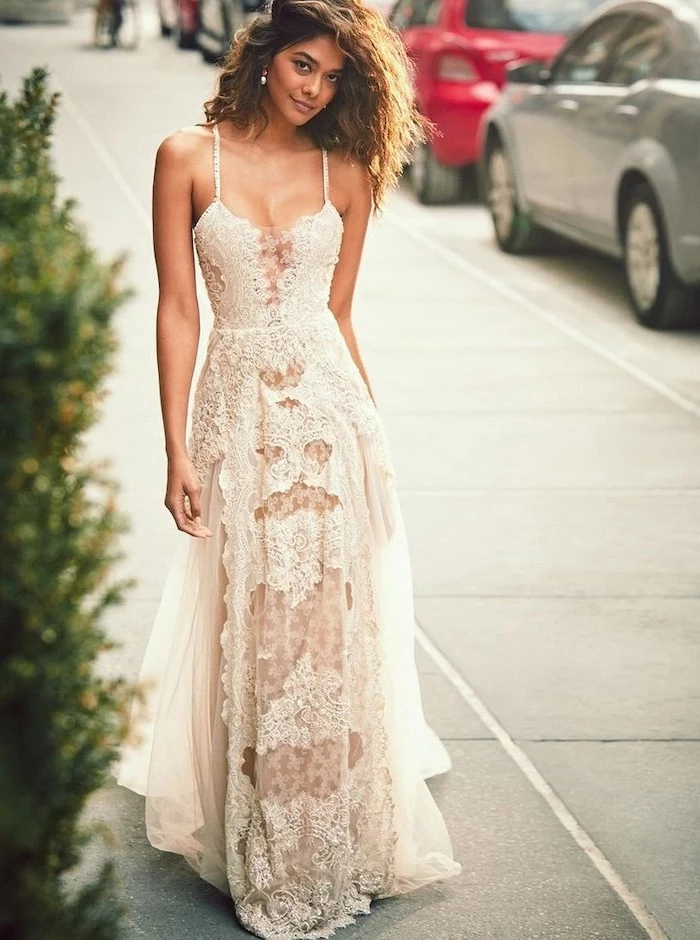
The Hemline Dilemma: A floor-length gown looks stunning, but on sand, it’s a trap. Consider a ‘high-low’ hem that’s shorter in the front to avoid tripping and collecting debris. A tea-length or even a chic midi-dress can be incredibly practical and stylish. The goal is to glide, not drag.
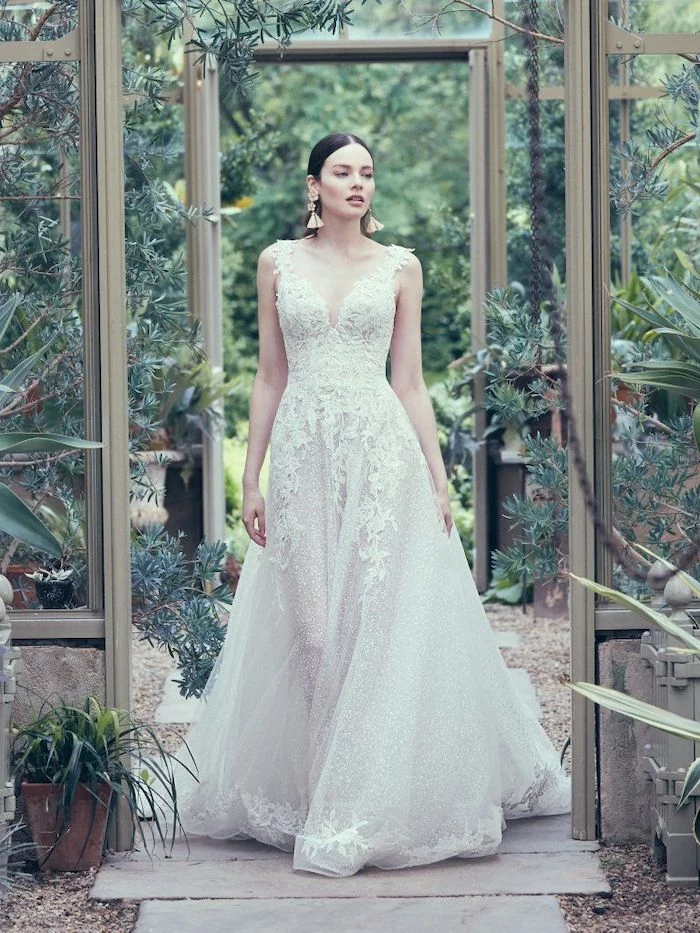
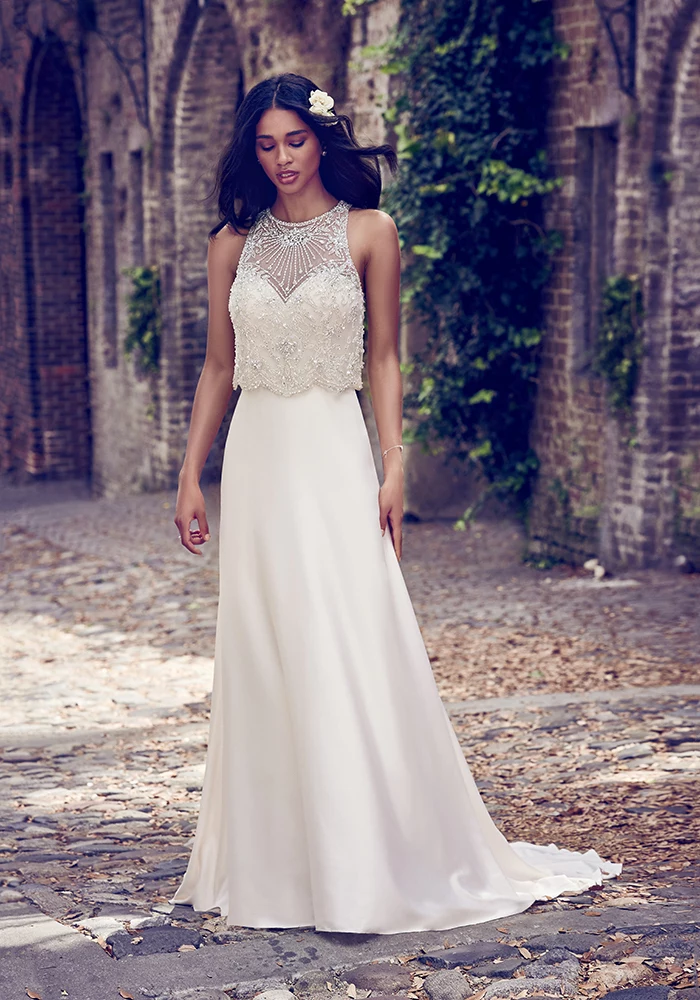
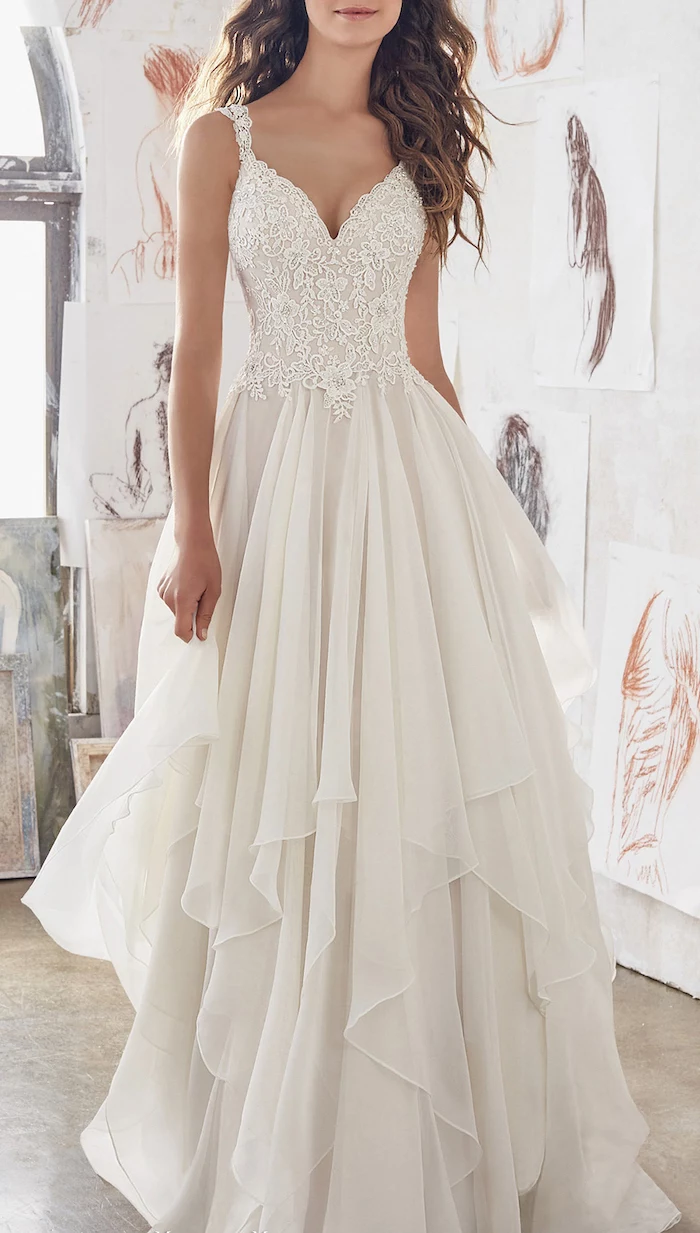
- A dress that moves beautifully with the ocean breeze.
- A silhouette that feels liberating, not restrictive.
- Fabric that keeps you cool under the sun.
The secret? Look for designs with godets—triangular fabric inserts in the skirt. They add incredible volume and flow for that perfect ‘wind-swept’ photo moment without adding weight.
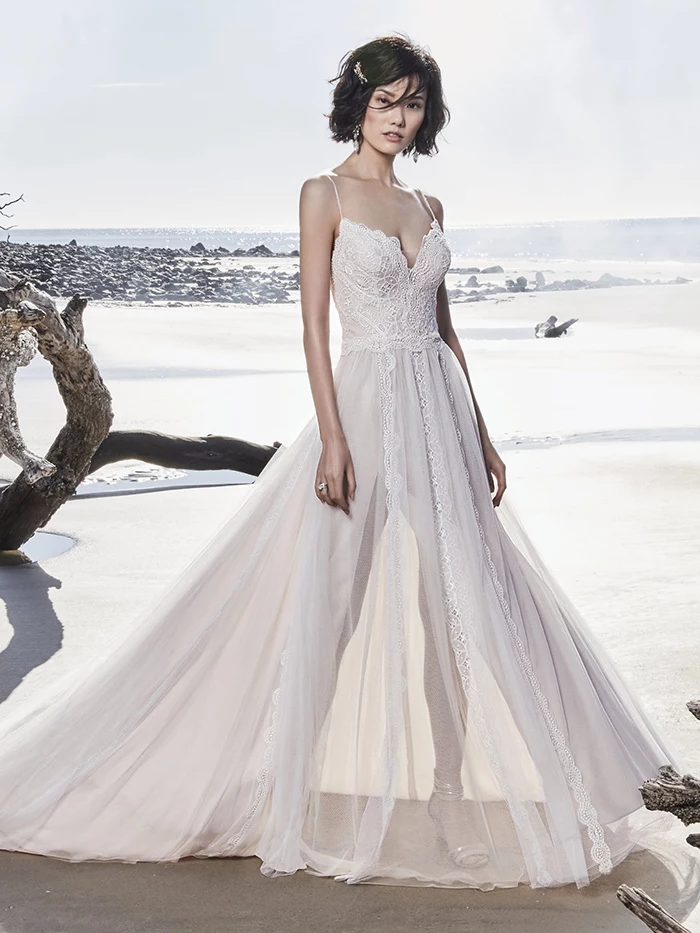
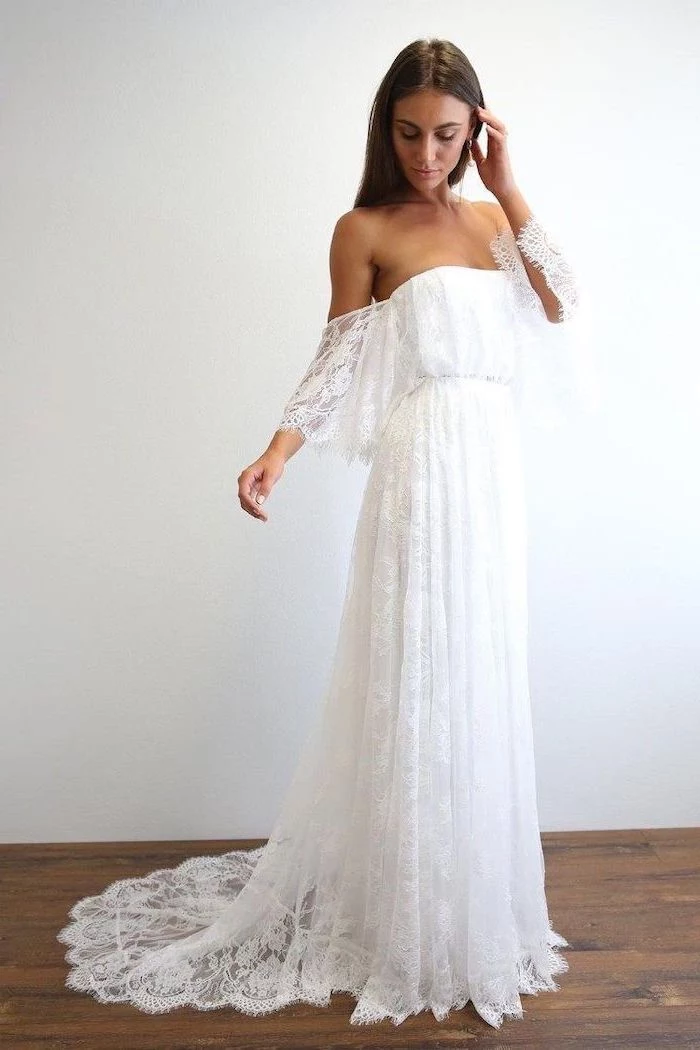
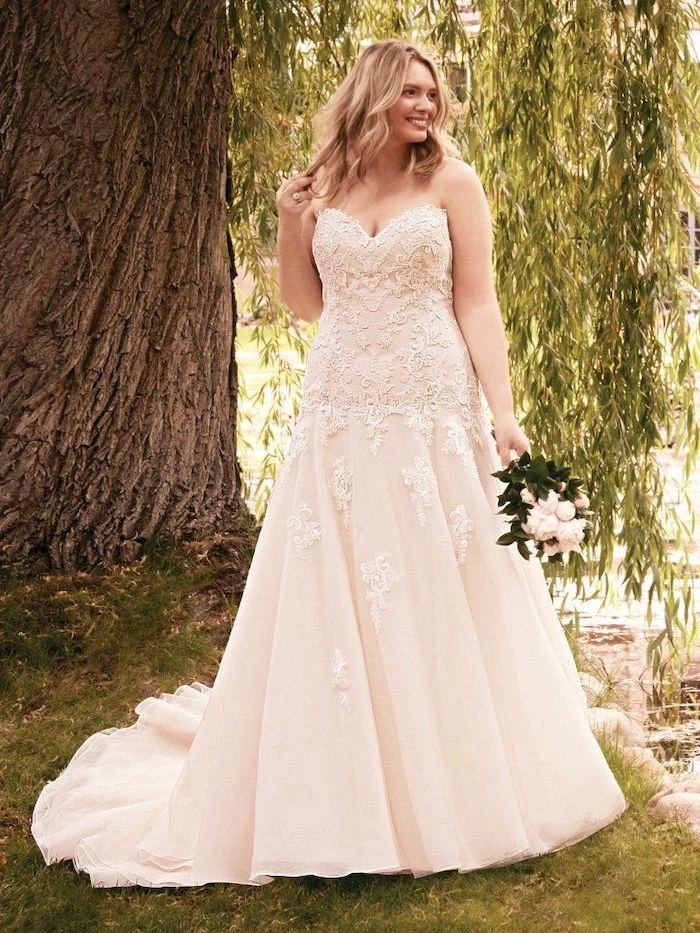
The average coastal wind speed can easily be 10-15 mph. That’s enough to turn a cathedral-length veil into a parachute.
This is why many beach brides are opting for alternatives. Think pearl-studded hairpins, a delicate floral crown made with local flora, or a beautifully woven silk ribbon. These options provide adornment without the risk of a wind-related mishap.
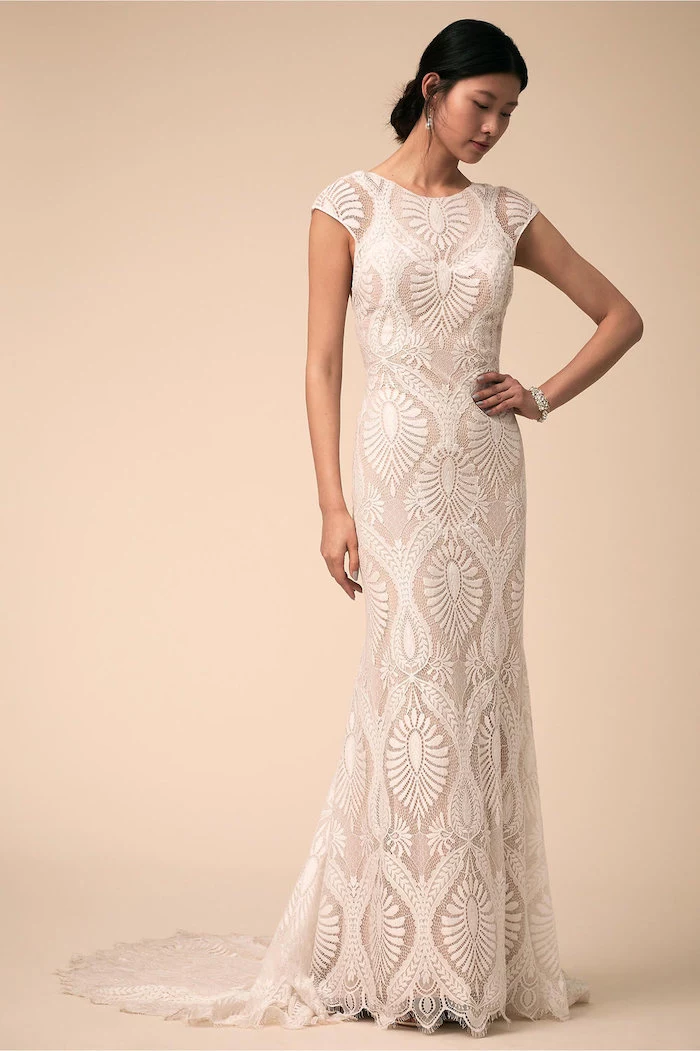
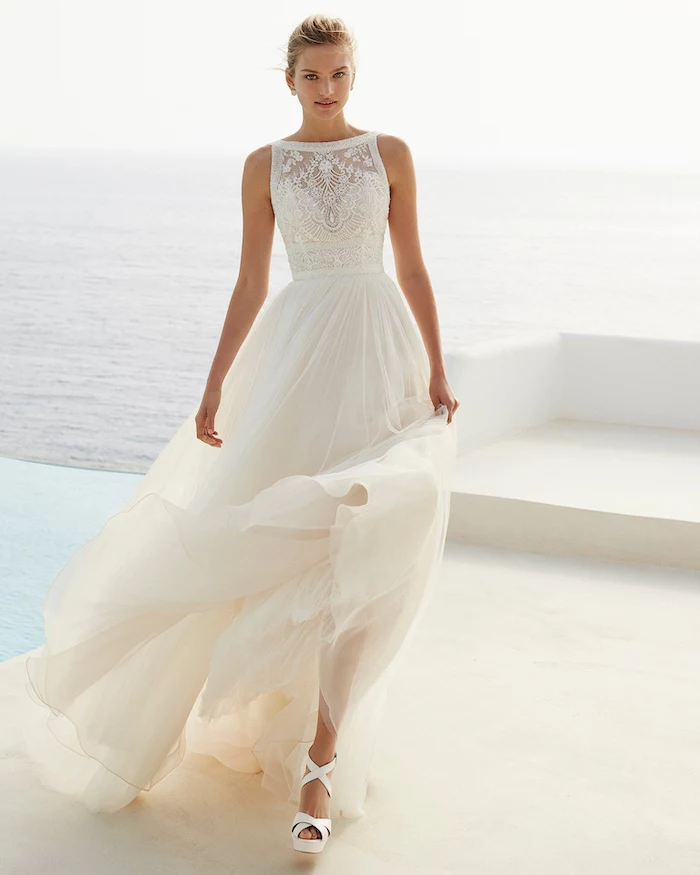
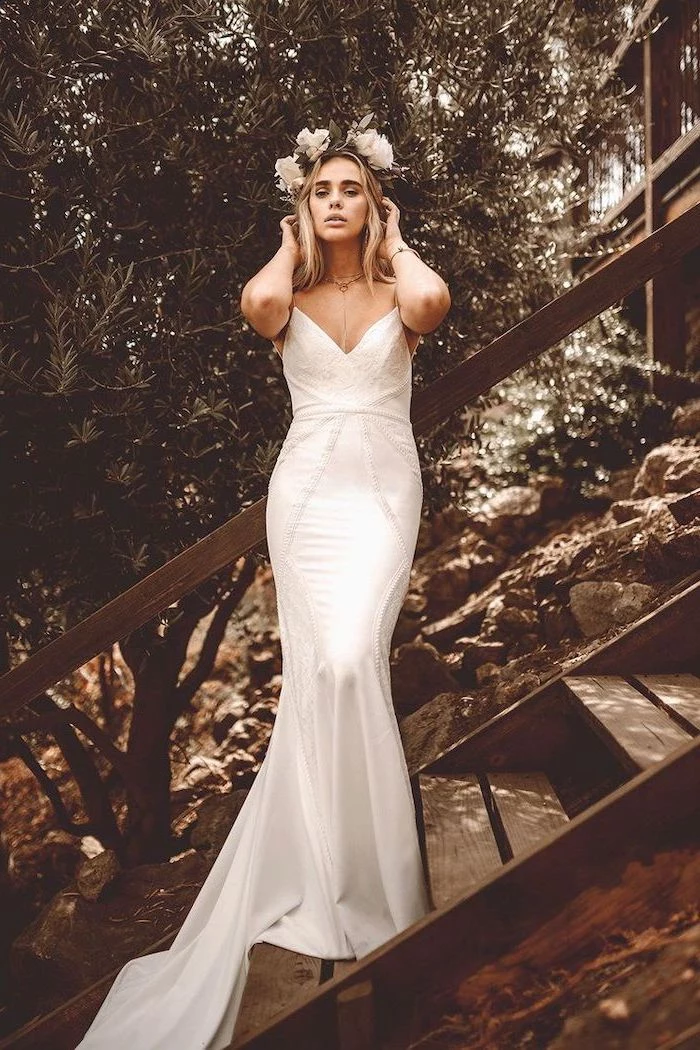
Can you wear a ball gown on the beach?
While traditional heavy satin ball gowns are a challenge, you can get the same romantic volume with smart fabric choices. Look for designers like Watters or Milla Nova who create A-line and ball gown silhouettes using layers of ultra-lightweight organza or English net. You get the drama and the princess feel without the heat stroke.
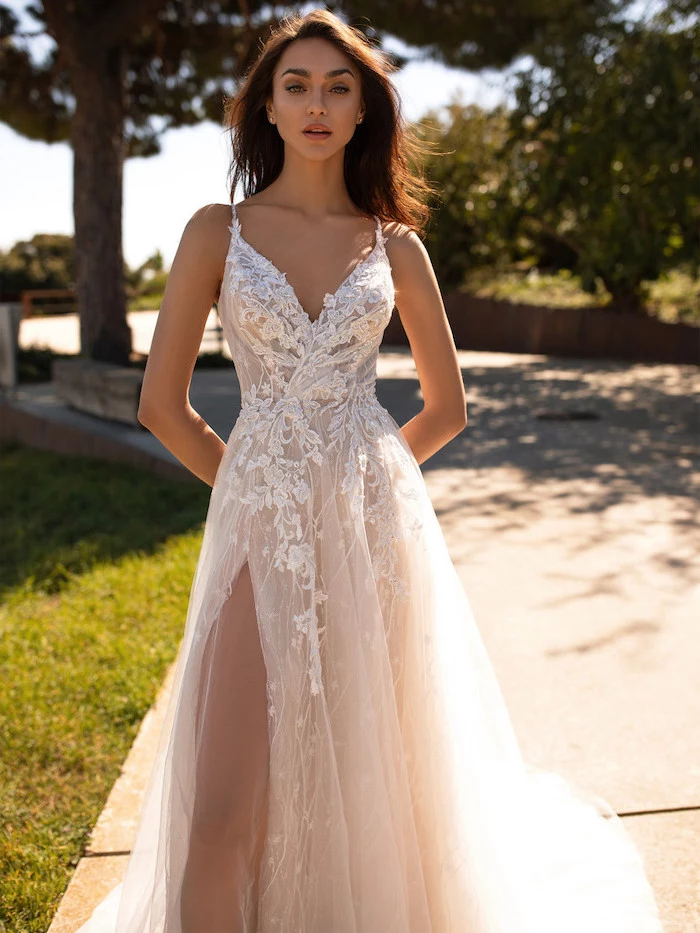
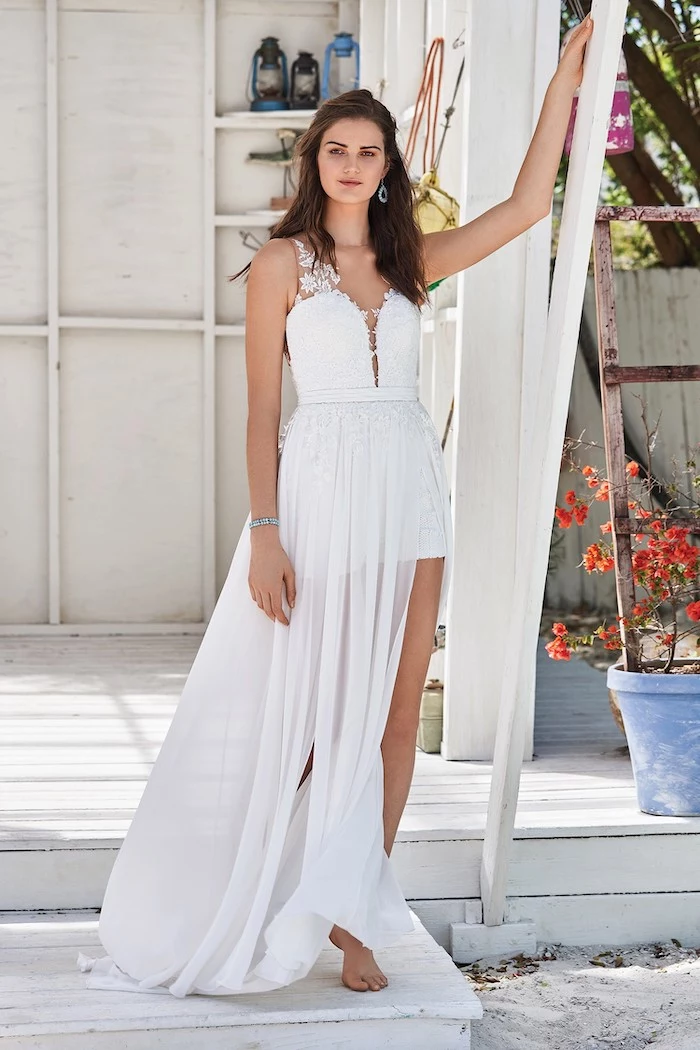
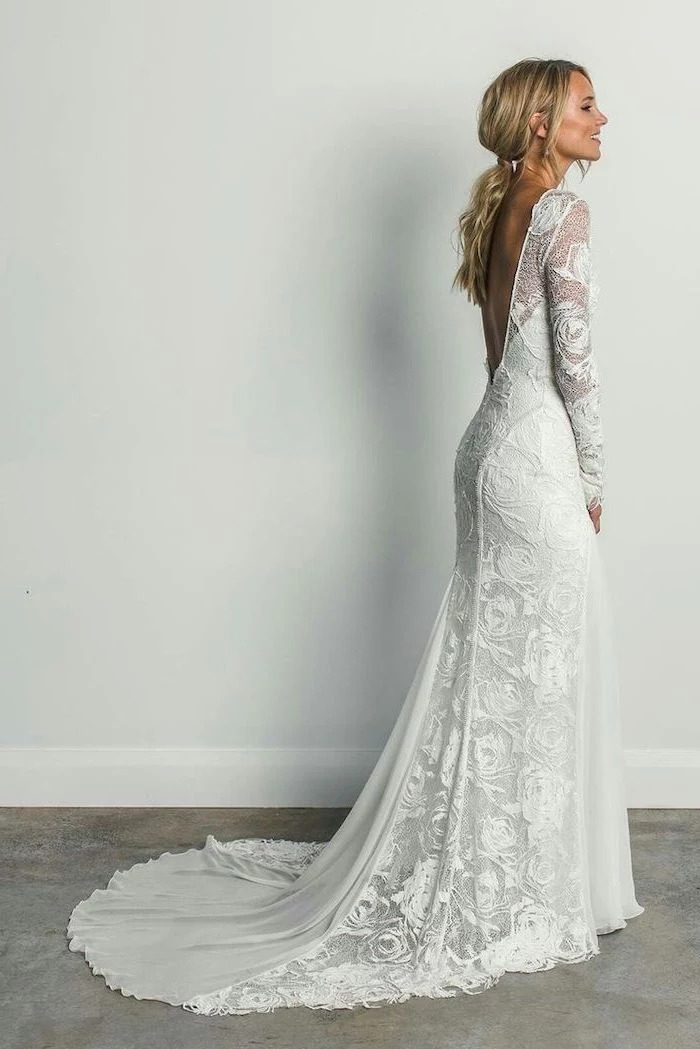
Don’t overlook the power of a two-piece ensemble. A lace crop top paired with a flowing chiffon or tulle skirt offers incredible versatility. Brands like BHLDN and Lulus often feature stunning bridal separates. The best part? You can easily re-wear the top with jeans or the skirt for an anniversary dinner, making it a sustainable and sentimental choice.
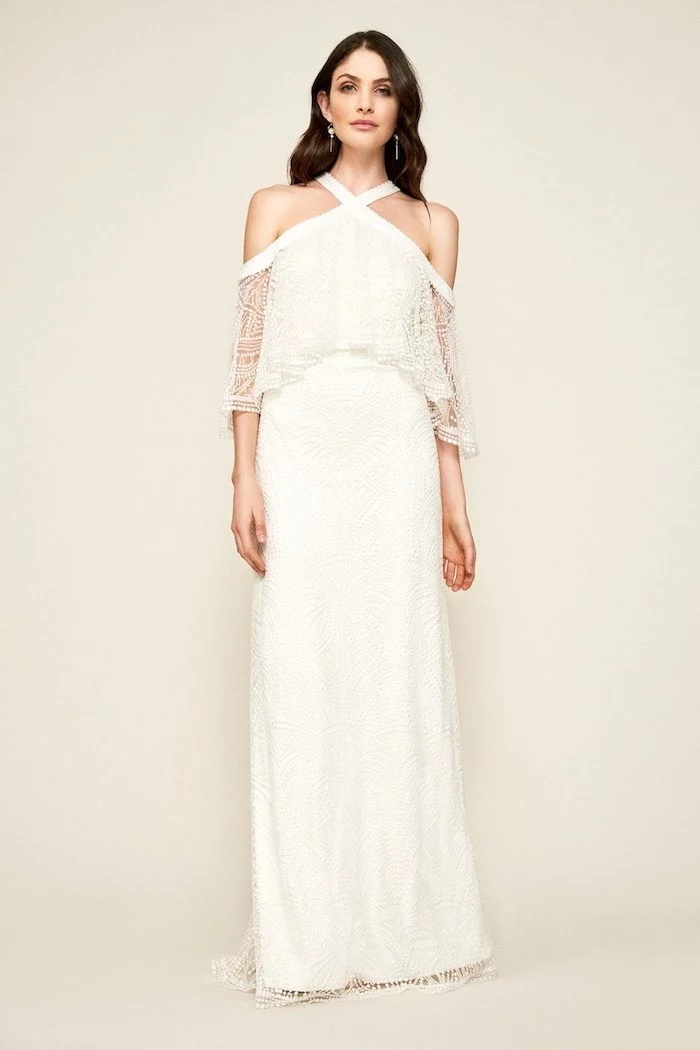
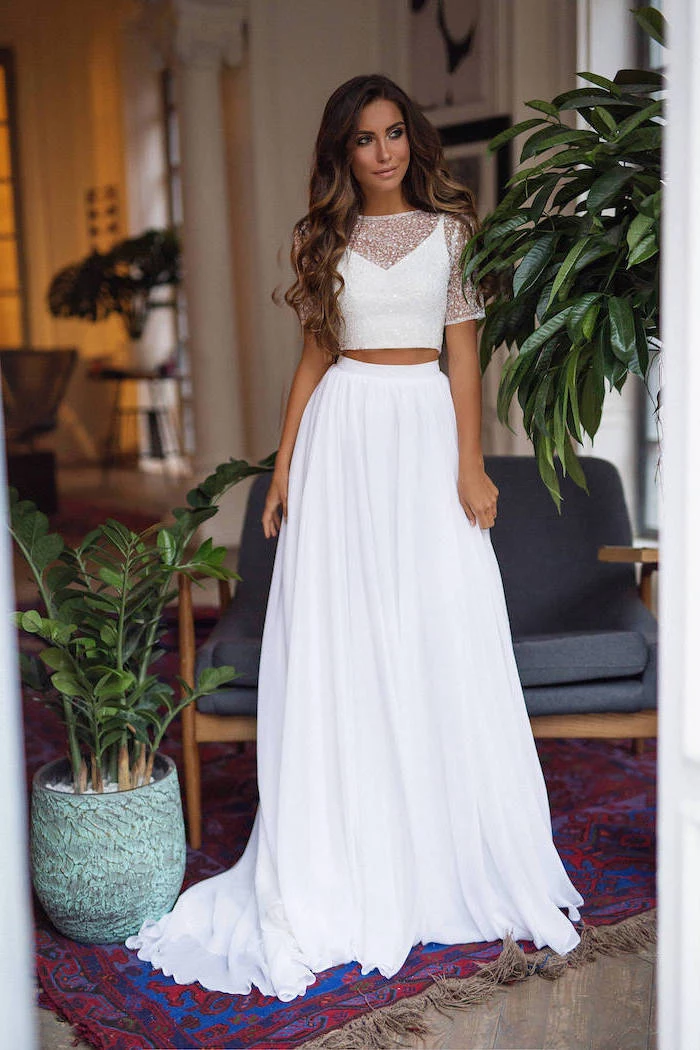
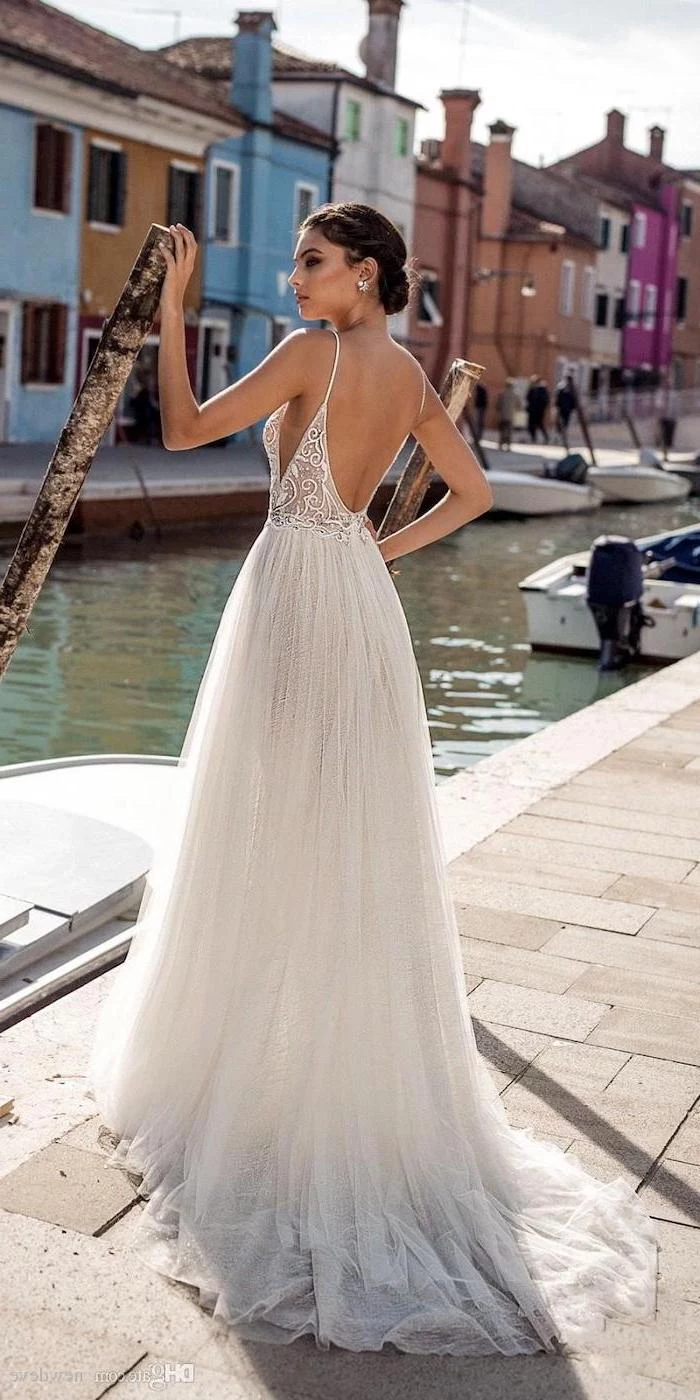
“For a beach wedding, the dress should feel like a second skin, not armor.” – A quote often attributed to bridal stylists.
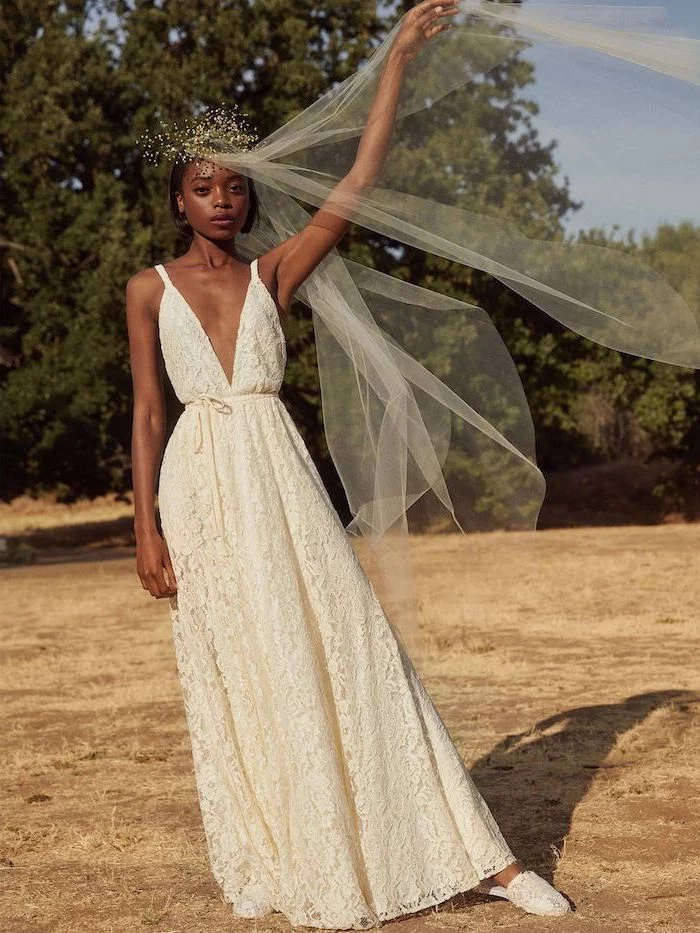

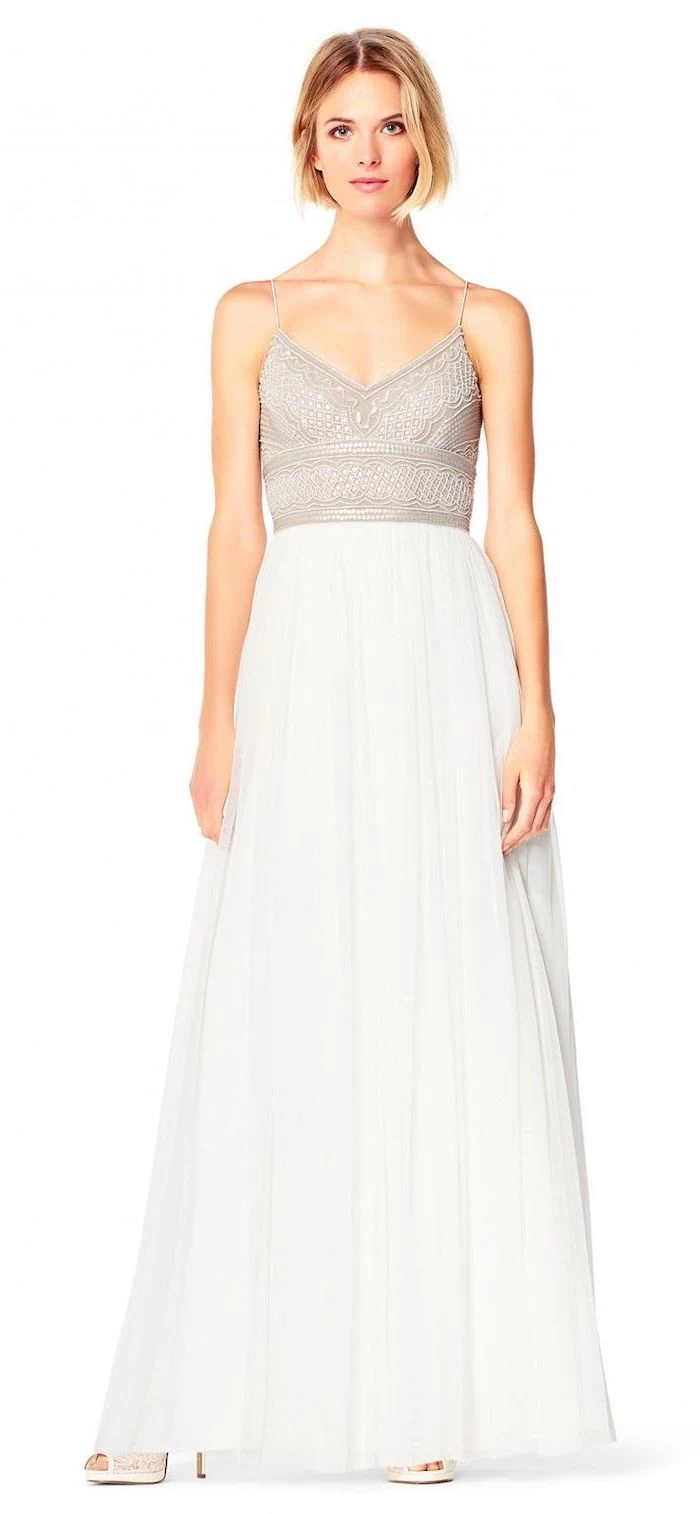
Guipure Lace: A heavier, bolder lace with motifs connected by threads. It’s durable and less likely to snag, perfect for a more structured boho look.
Chantilly Lace: Extremely fine and delicate, with a detailed, romantic pattern. It’s incredibly lightweight, making it ideal for a soft, ethereal feel, but be mindful of potential snags on driftwood or shells.
For a beach setting, Guipure often proves more resilient while still offering that coveted lace aesthetic.
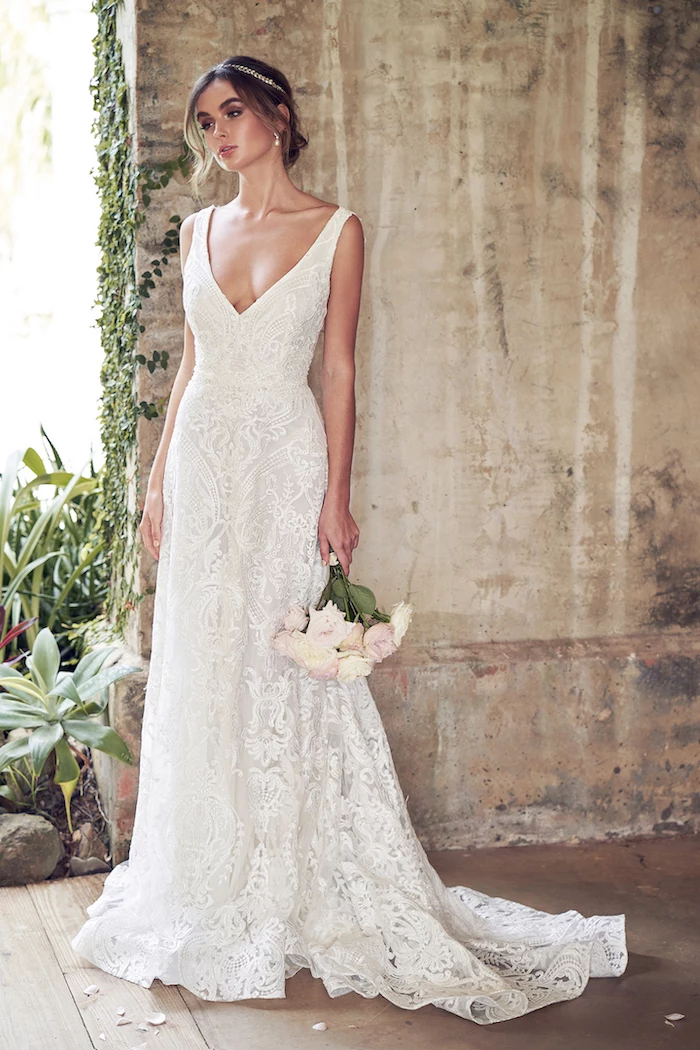
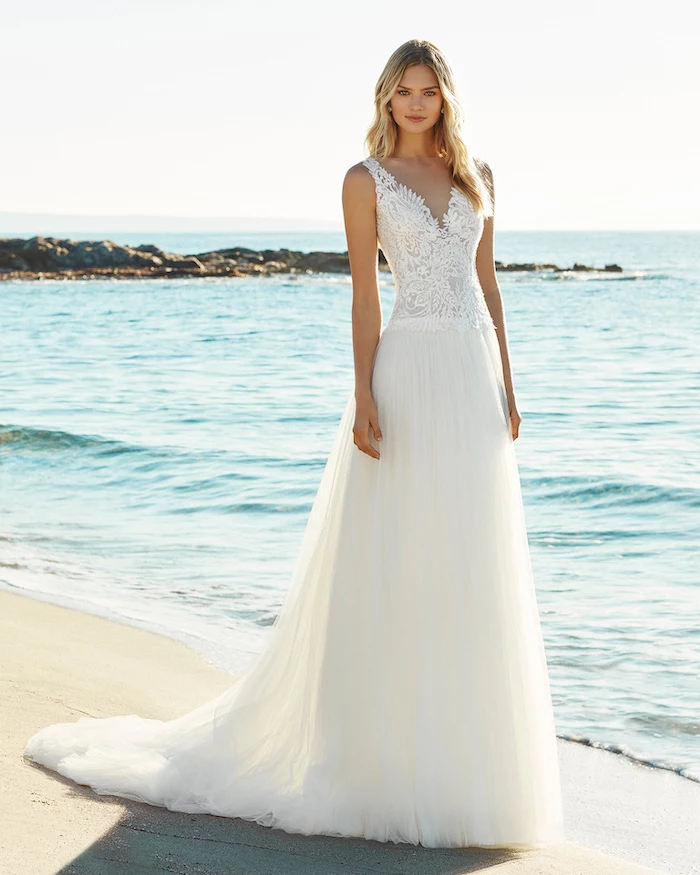

The journey is part of the destination wedding. When packing your dress, turn it inside out and roll it, don’t fold it. Place it in a dedicated garment bag and carry it on the plane. Never, ever check your wedding dress. Upon arrival, hang it in the bathroom and run a hot shower; the steam is the best tool for releasing travel wrinkles from fabrics like chiffon or crepe.
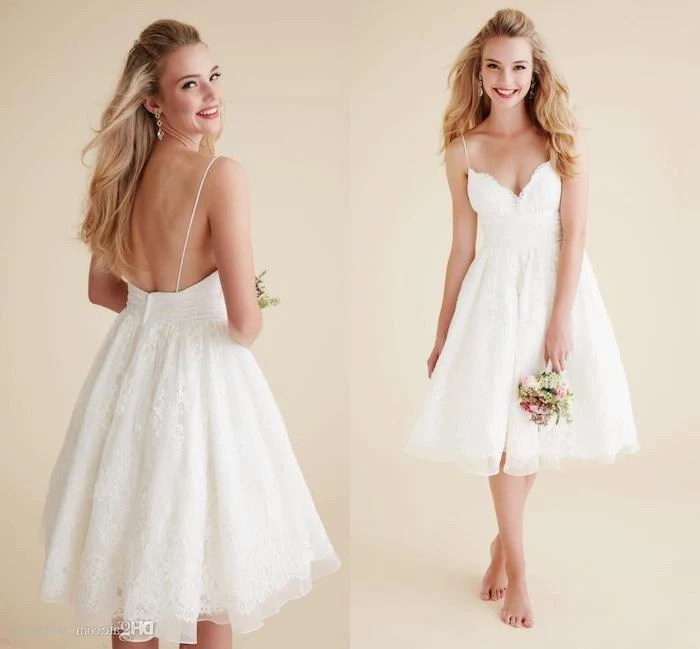
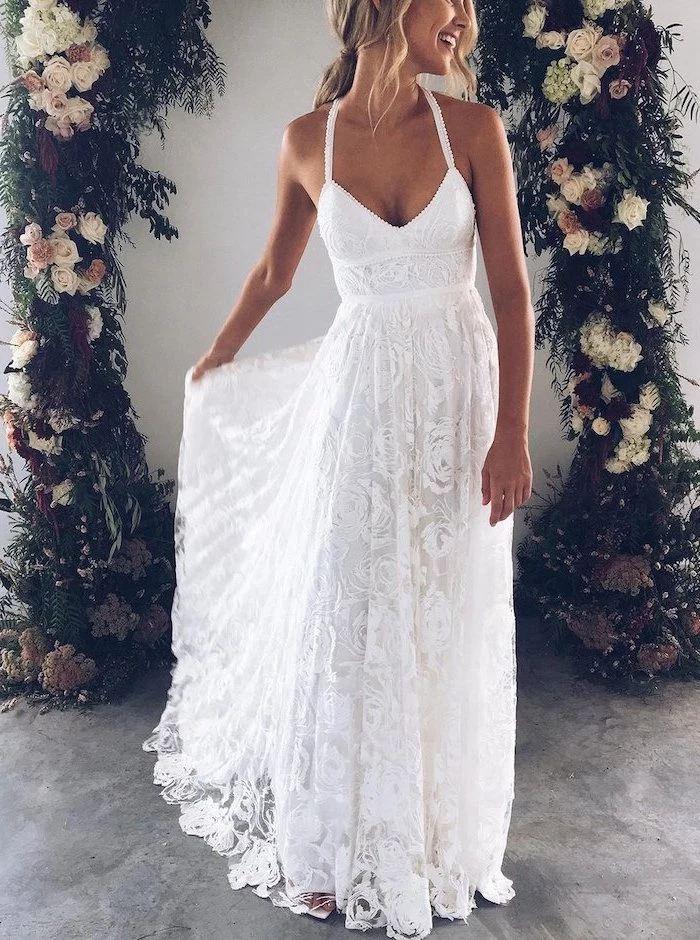
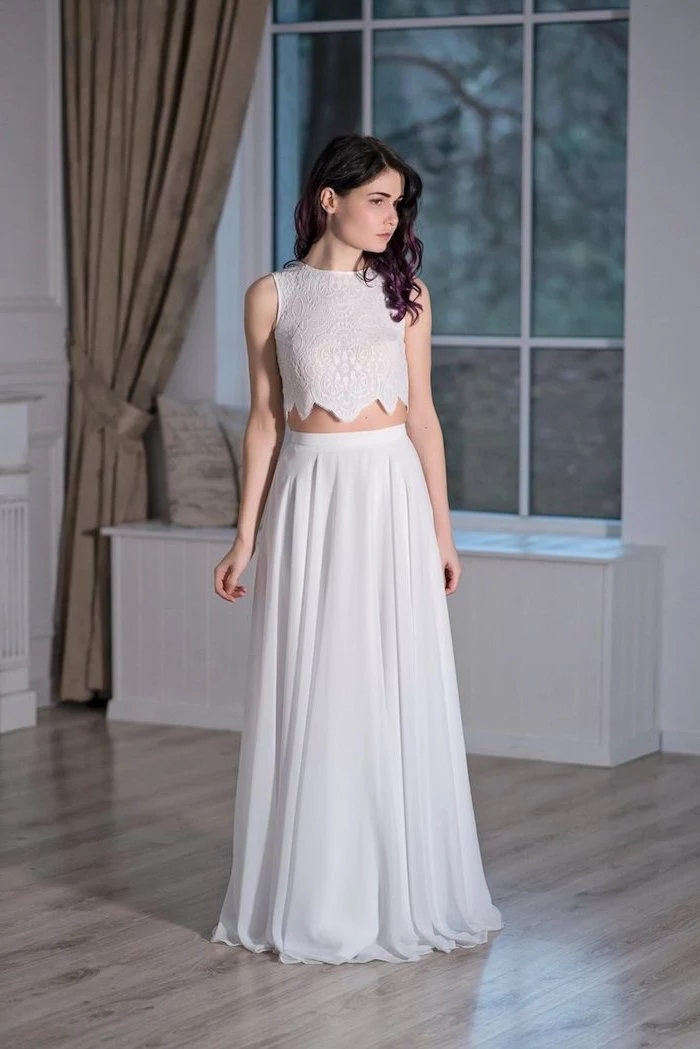
A note on sparkle: Beading and sequins are beautiful, but they can feel heavy and hot in direct sun. If you love a bit of glimmer, opt for subtle pearl details, opalescent sequins that catch the light softly, or a metallic thread woven into the lace. It provides that touch of magic without weighing you down.
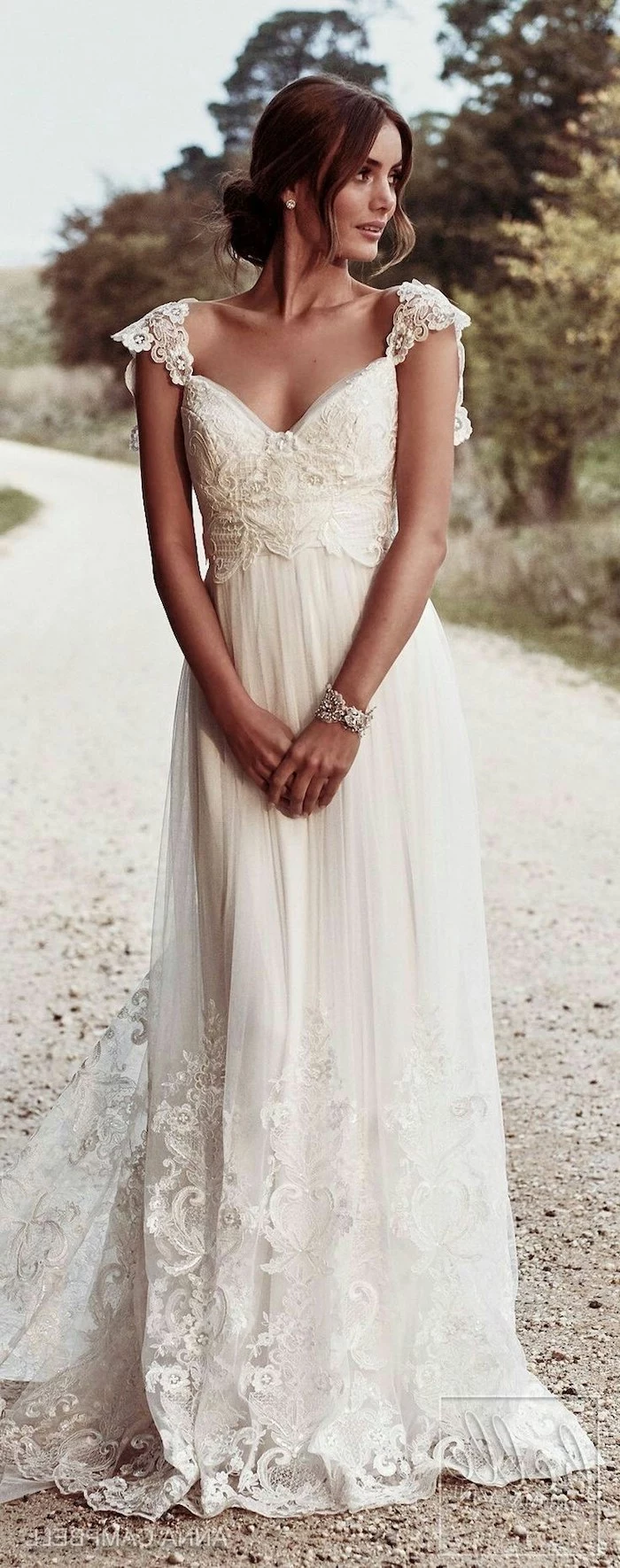
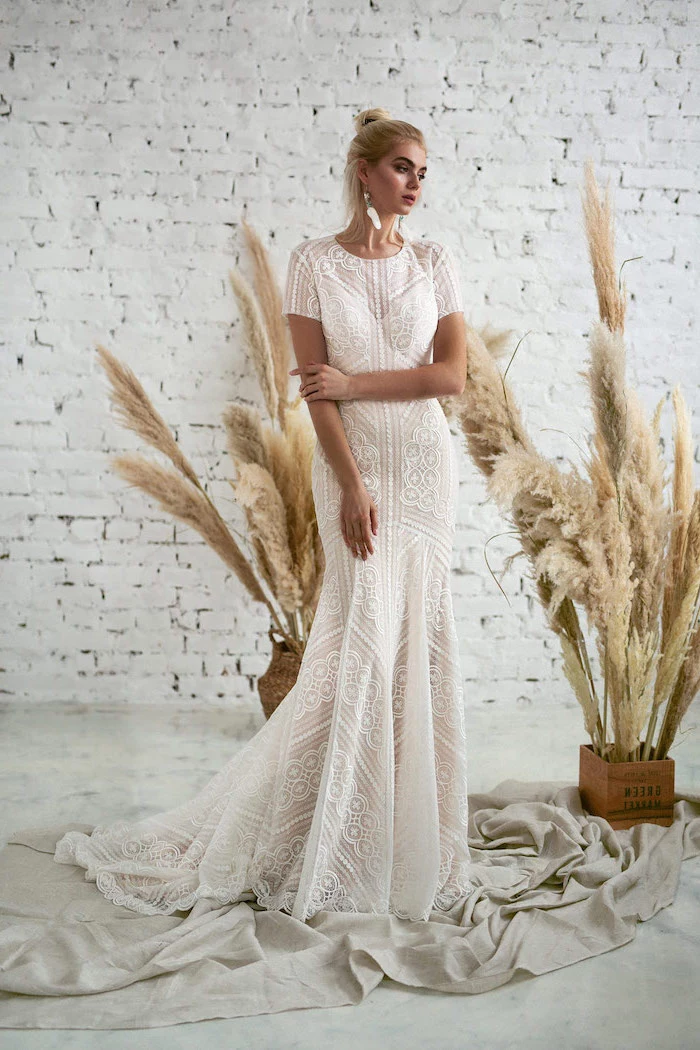
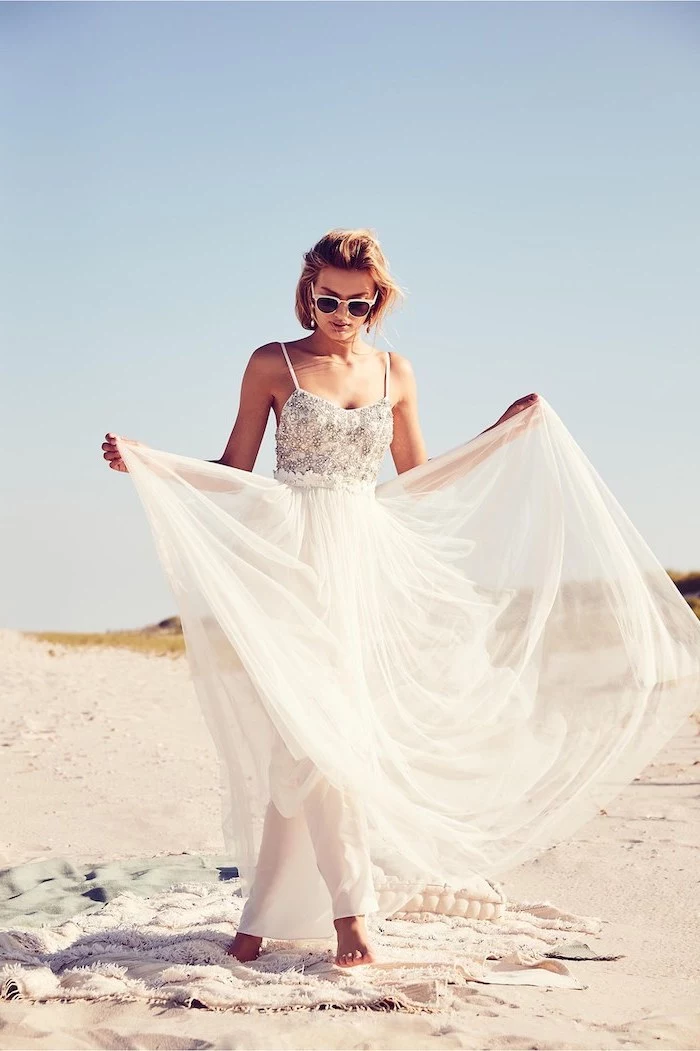
- Walk on a similar surface (sand or a thick rug) to test movement.
- Sit, stand, and bend to ensure it’s not just a ‘standing dress’.
- Do a ‘wind test’ with a fan to see how the skirt and any straps behave.
A pre-wedding ‘dress rehearsal’ in conditions mimicking the beach can prevent so many day-of surprises.
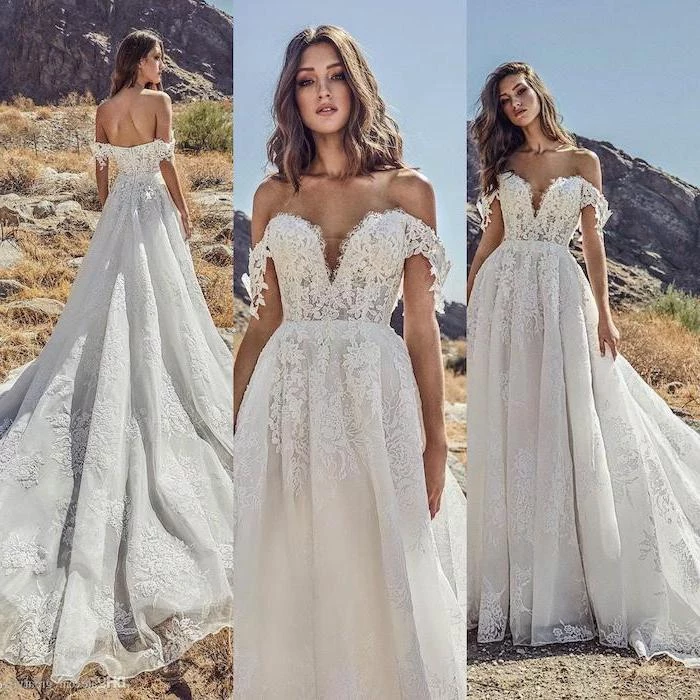
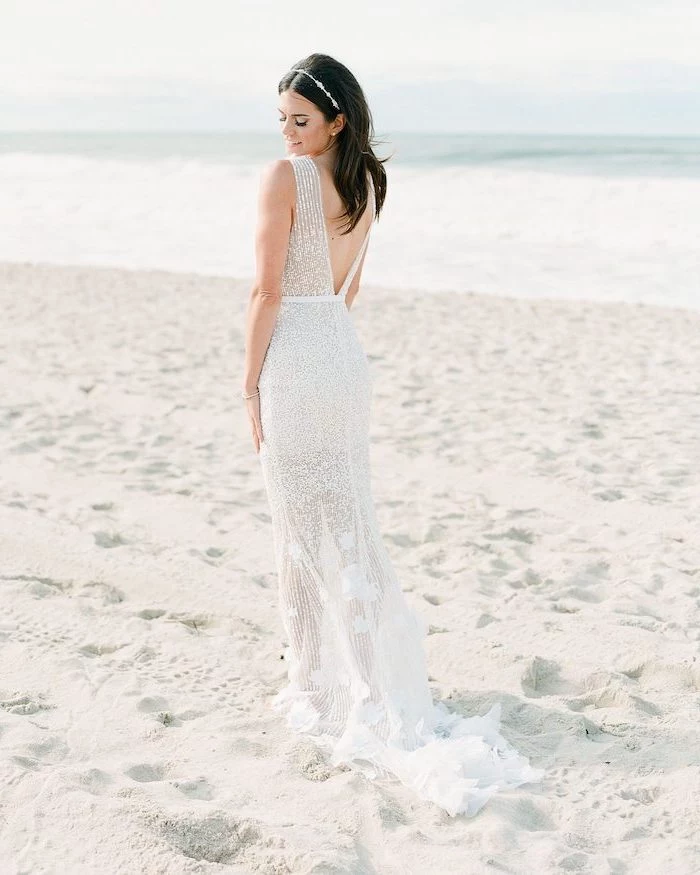
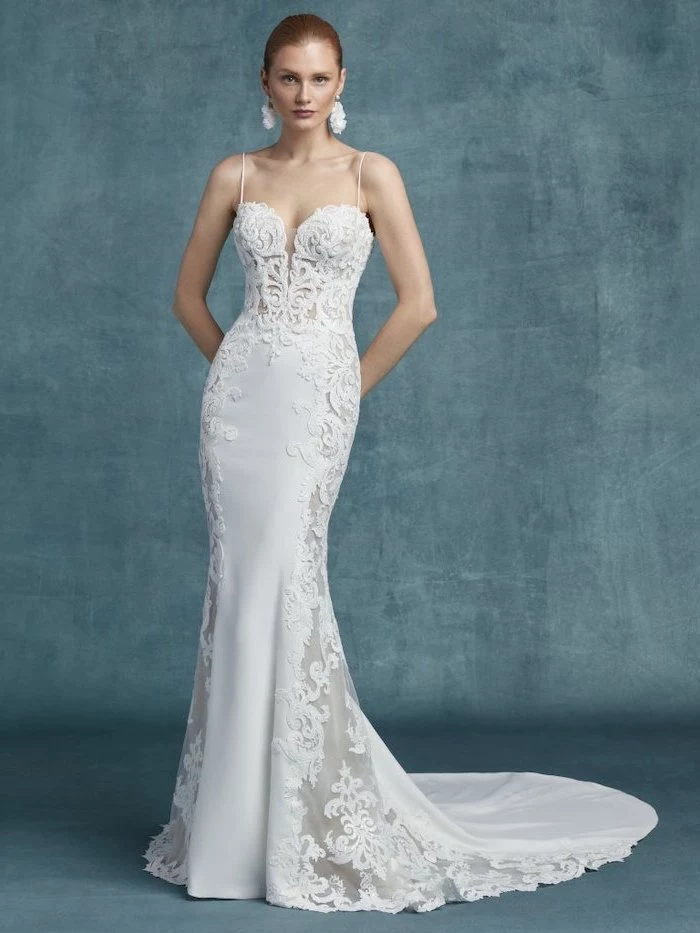
What’s the secret to staying cool in long sleeves?
It’s all about illusion. Many designers, like Grace Loves Lace, famous for their Australian beach-perfect gowns, use ‘illusion sleeves.’ These are crafted from a single layer of ultra-sheer tulle or patterned lace, giving the elegant look of a long sleeve without any of the heat-trapping properties of a lined sleeve. You get the aesthetic without the sweat.
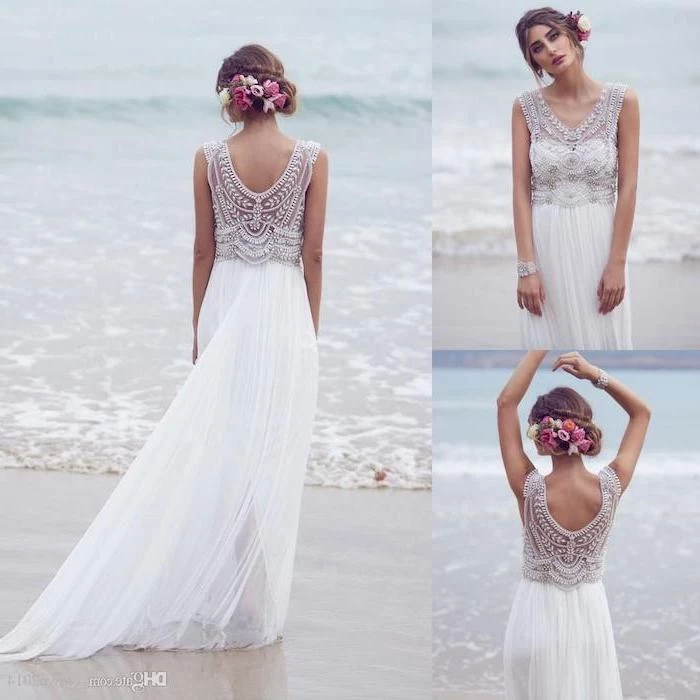
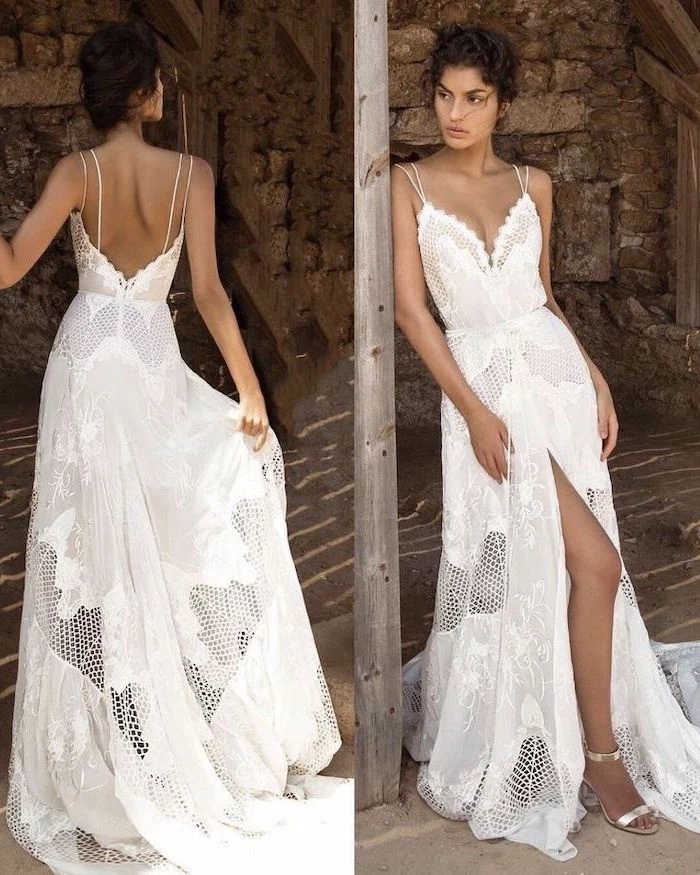
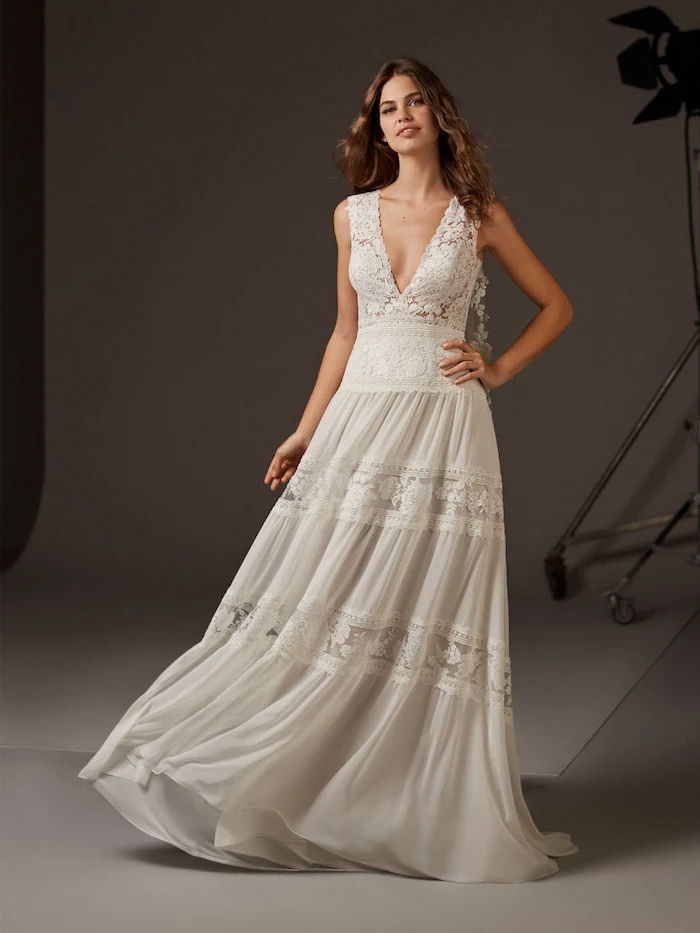
According to a study by The Knot, nearly 25% of modern weddings are destination weddings, with beaches being the top location choice.
This trend has pushed designers to innovate. We’re now seeing more travel-friendly, wrinkle-resistant fabrics and convertible dresses (e.g., with detachable trains or overskirts) designed specifically for the destination bride.
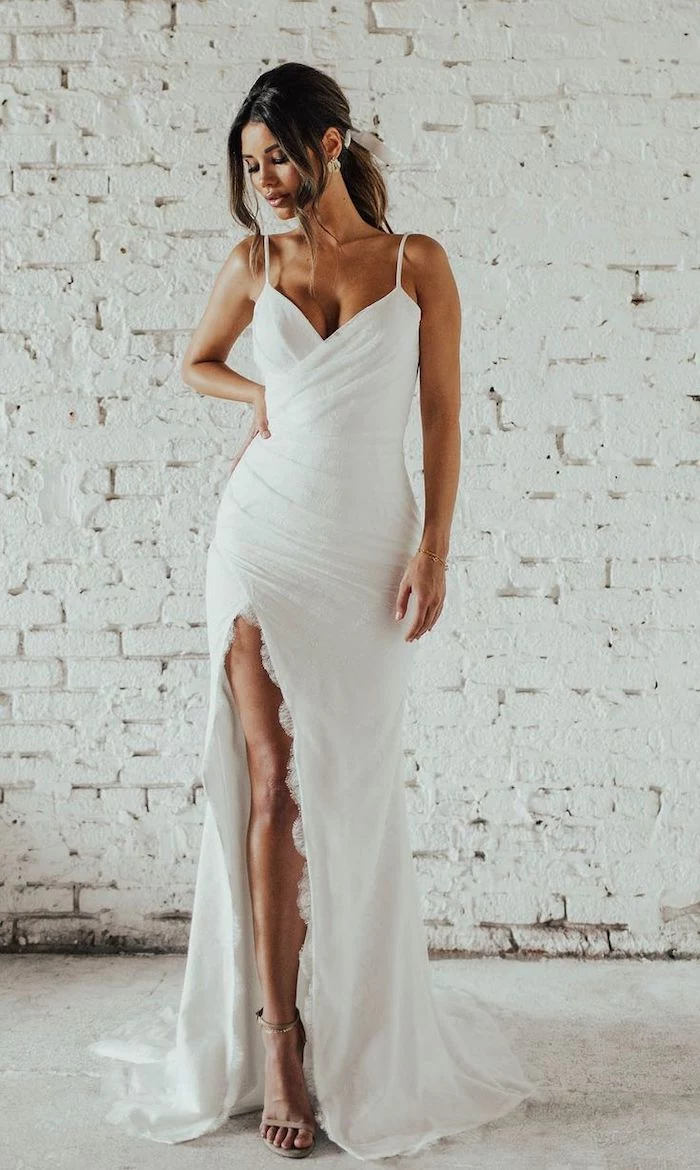
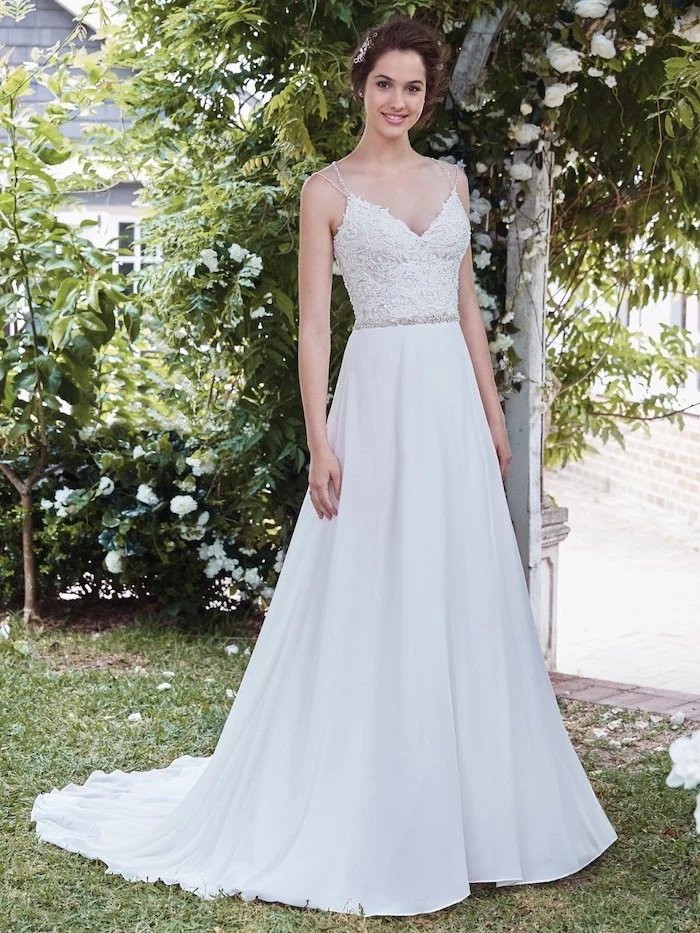
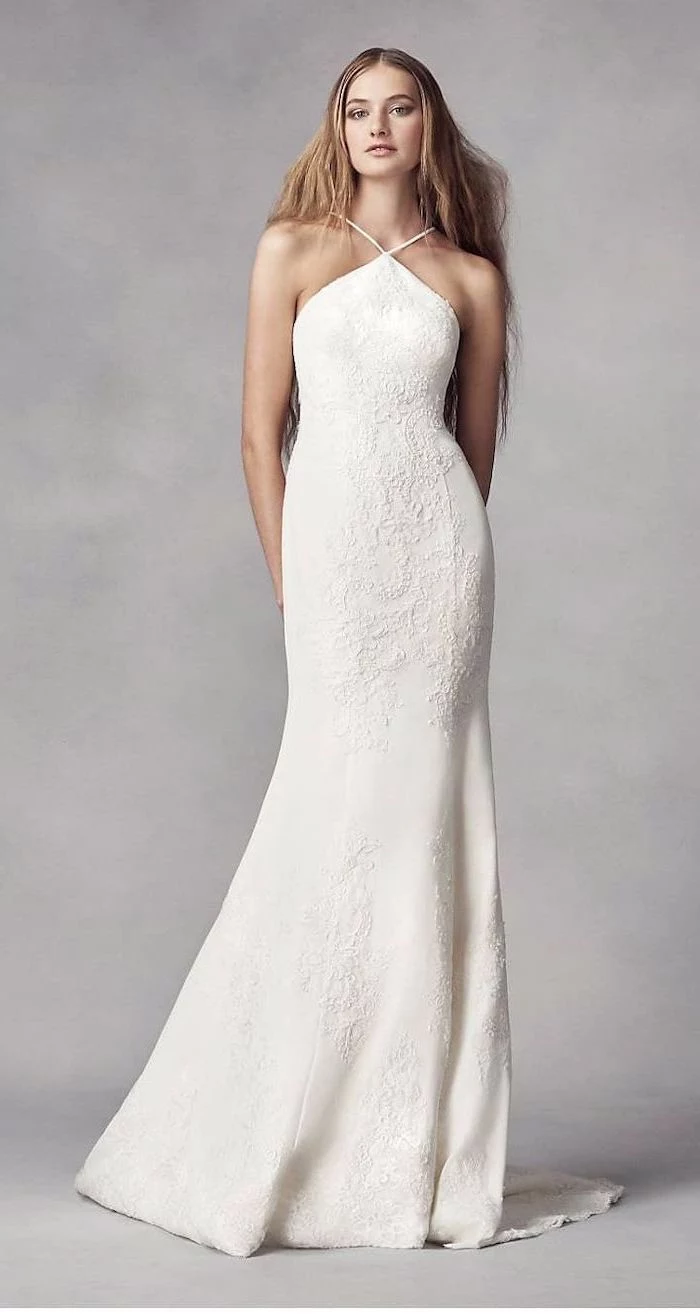
Think beyond pure white. Shades like ivory, cream, champagne, or even a soft blush can be stunning against a coastal backdrop. These warmer tones often photograph better in the harsh light of a midday sun, preventing the dress from looking ‘blown out’ or losing its detail in pictures.
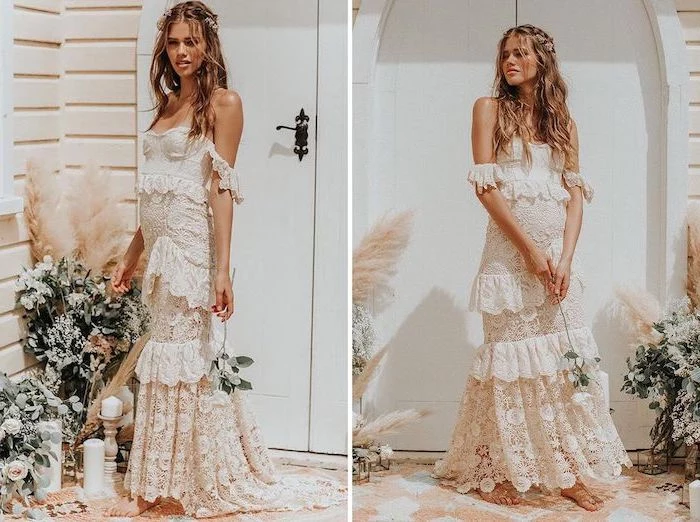
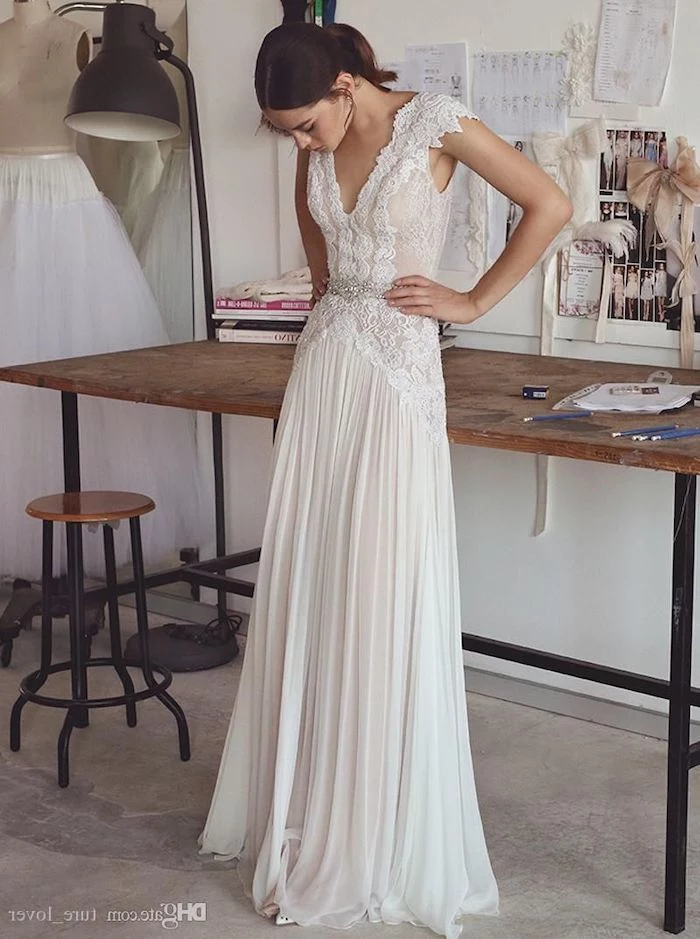

The slip dress is the epitome of beach chic. Unfussy, elegant, and timeless. Look for one cut on the bias from a quality fabric like silk charmeuse or a heavy crepe. It drapes beautifully, highlights your silhouette without clinging, and feels incredible to wear. It’s the perfect canvas for a statement earring or a simple, fresh bouquet.
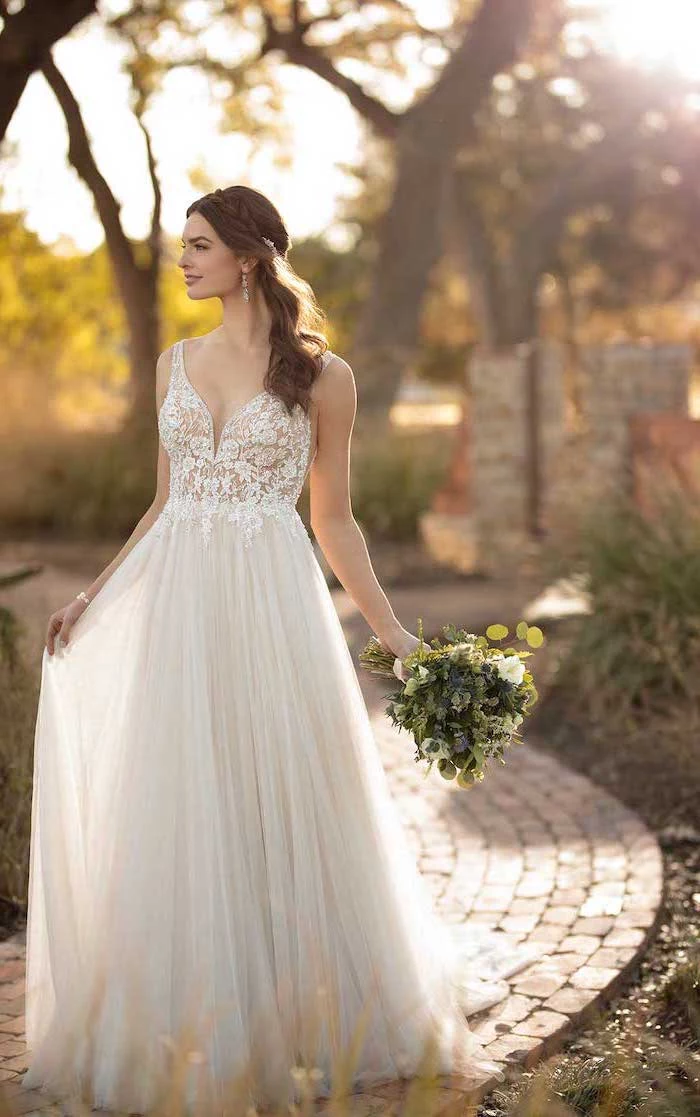
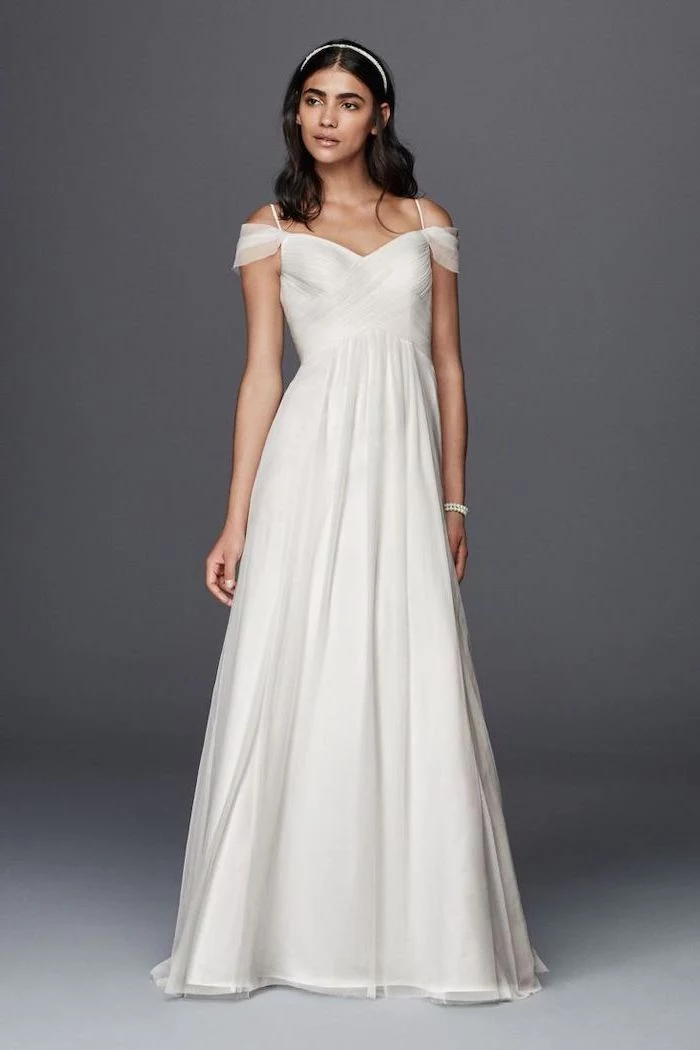
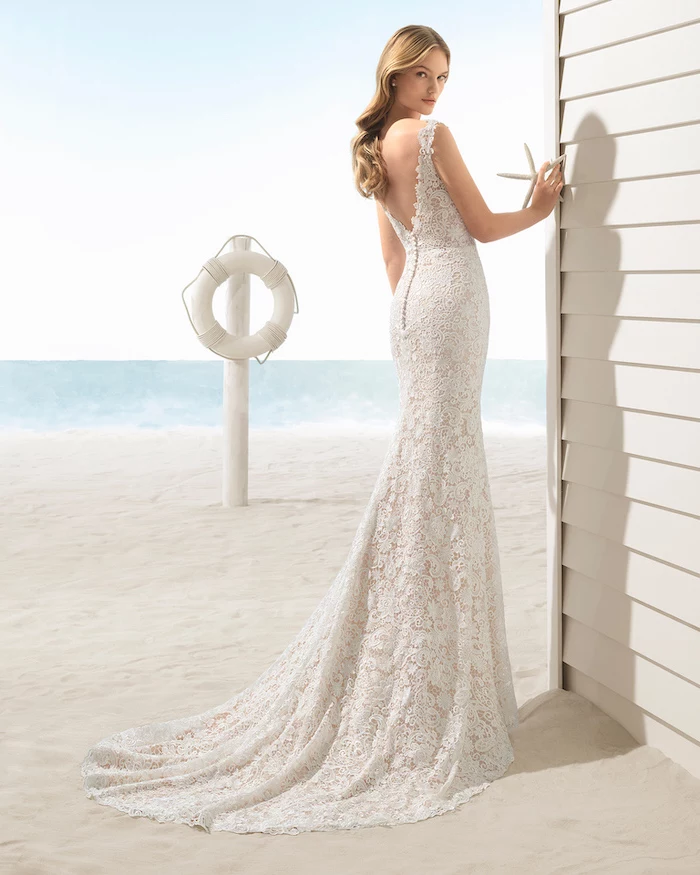
- Barefoot sandals (jewelry for your feet)
- Wedge espadrilles for height without sinking
- Flat, embellished leather sandals
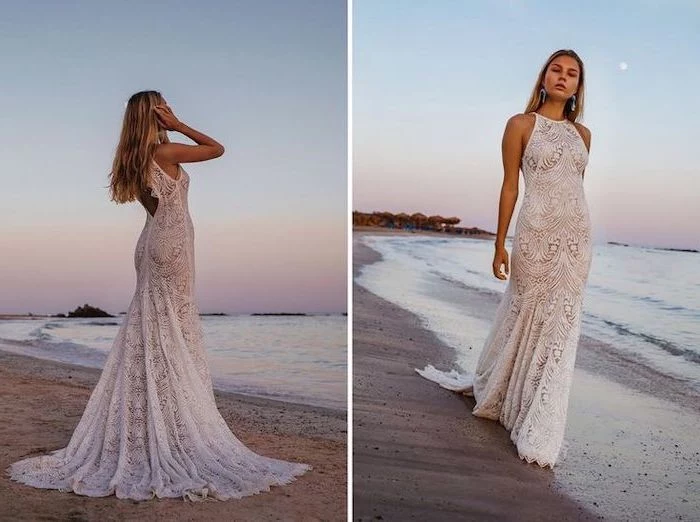
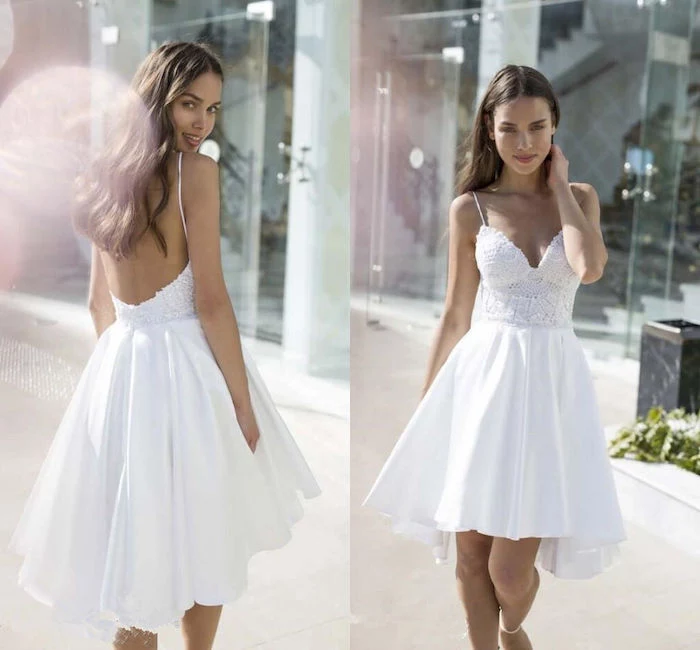
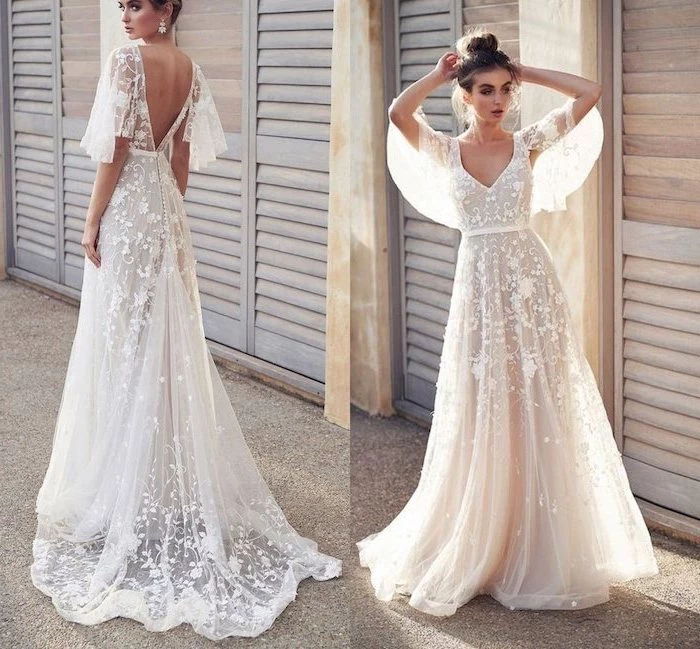
Important point: Undergarments can make or break the look with a lightweight dress. Seamless, skin-toned panties are a must. For bust support, consider sewn-in cups, which are a game-changer for backless or thin-strapped styles. Brands like Boomba offer innovative sticky bras that provide shape and support without any visible straps.
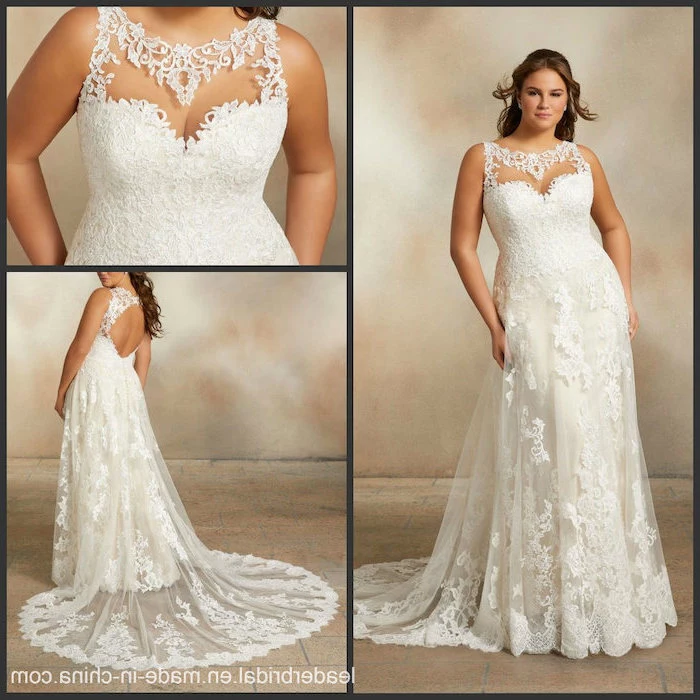
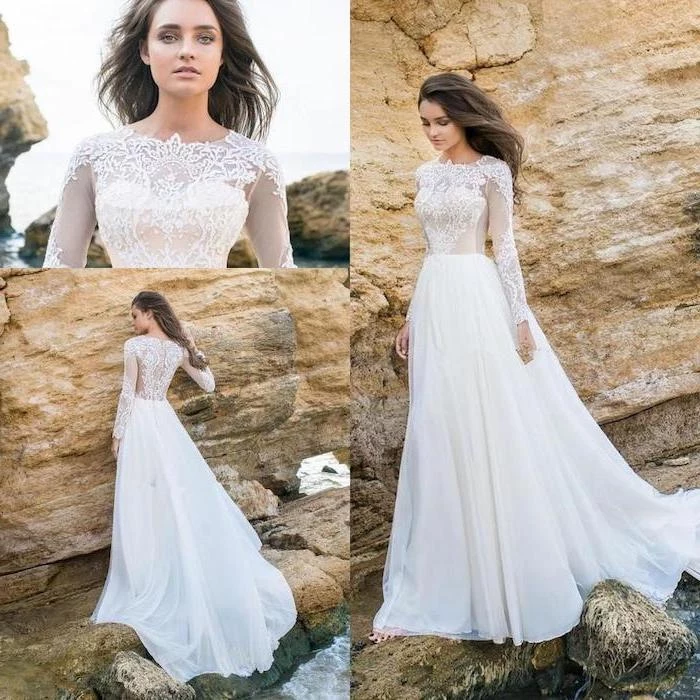

Consider the sunset. If your ceremony is timed for the golden hour, a dress with subtle, light-catching elements can be magical. Think a light scattering of sequins on a tulle overskirt or a silk fabric with a natural luster. As the sun dips, your dress will literally glow.
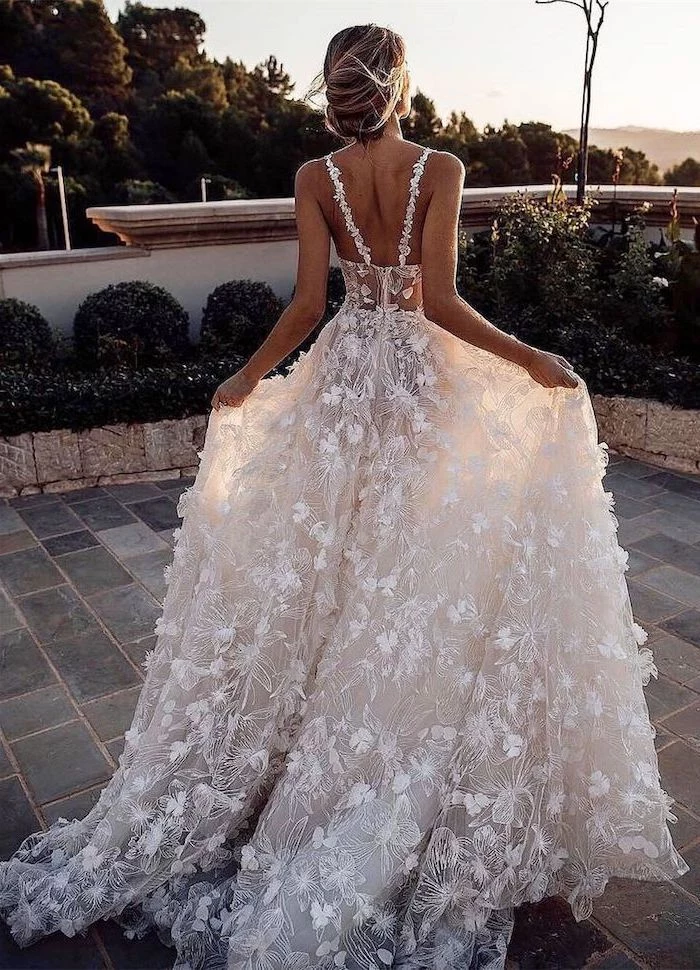
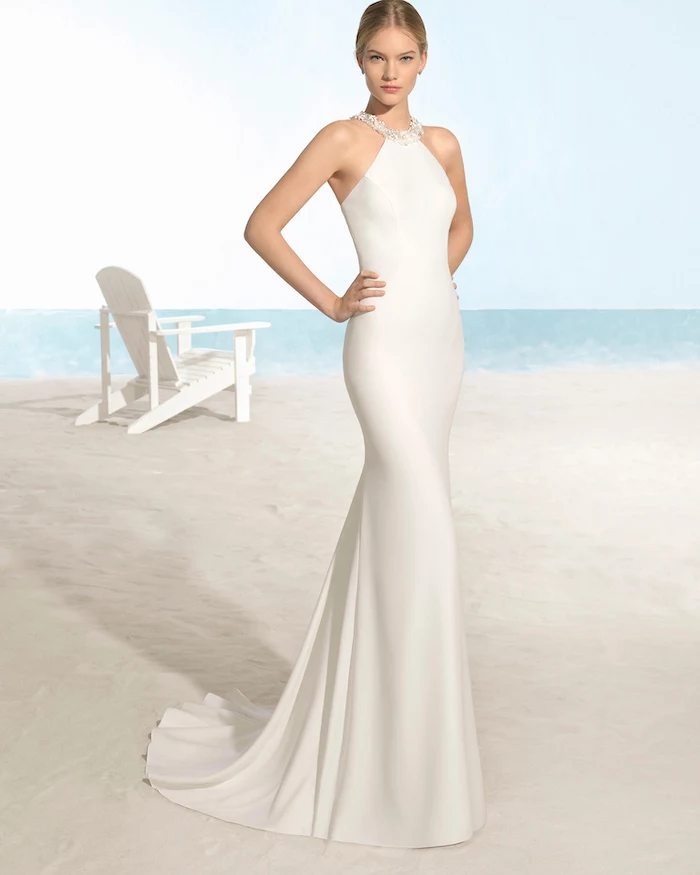
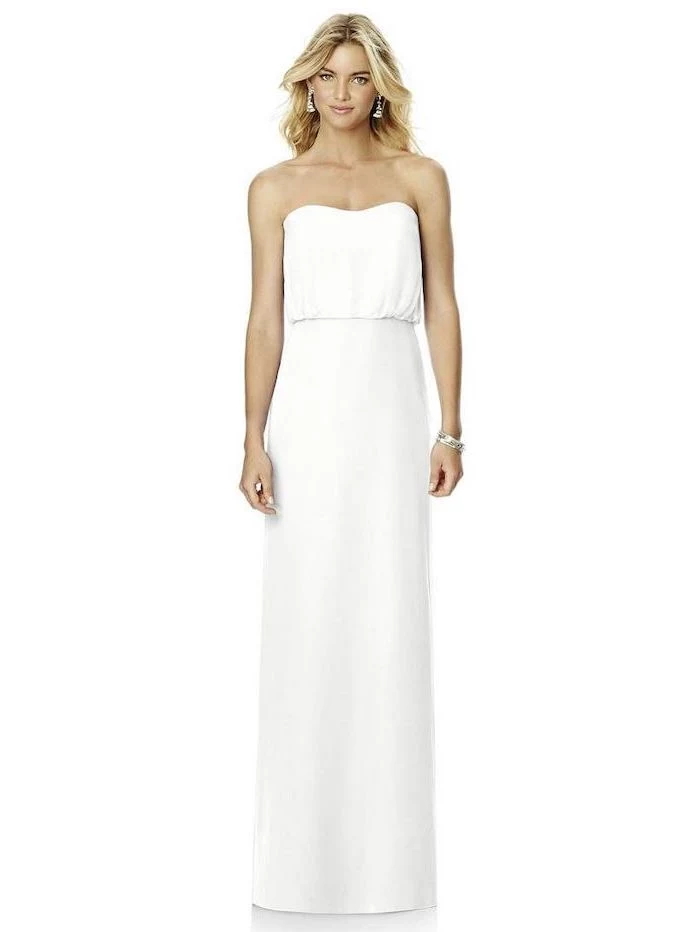
- It won’t get dirty before the ceremony.
- You have more freedom of movement for dancing.
- It’s a fun surprise for your guests and partner.
The trick? A chic reception dress! Many brides are opting for a short, feathery number, a silky jumpsuit, or a simple slip dress to change into for the party.
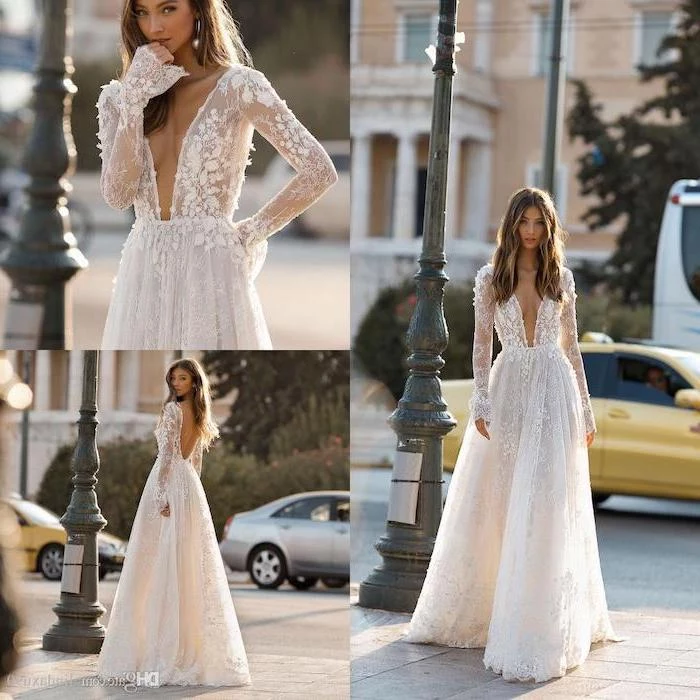
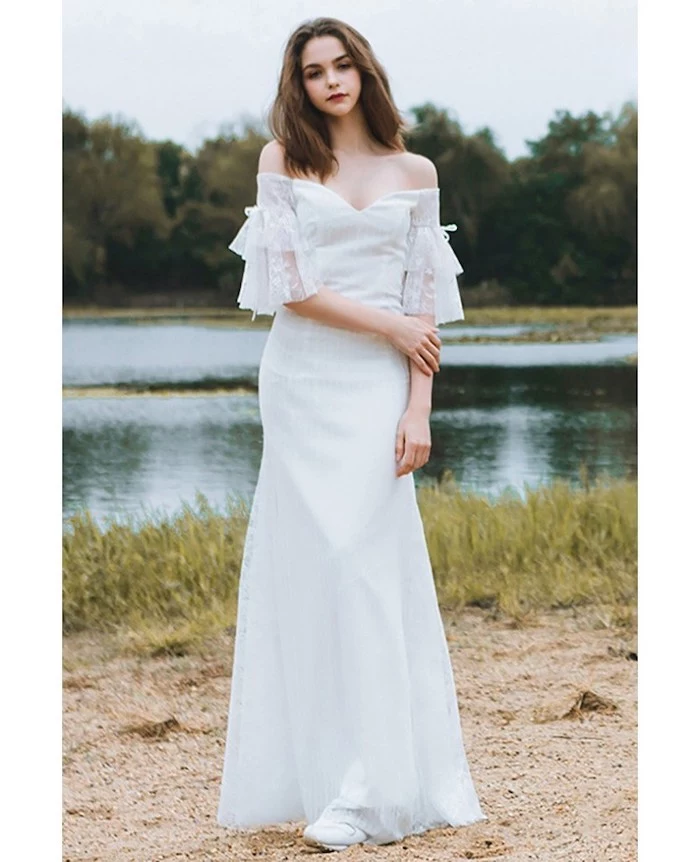
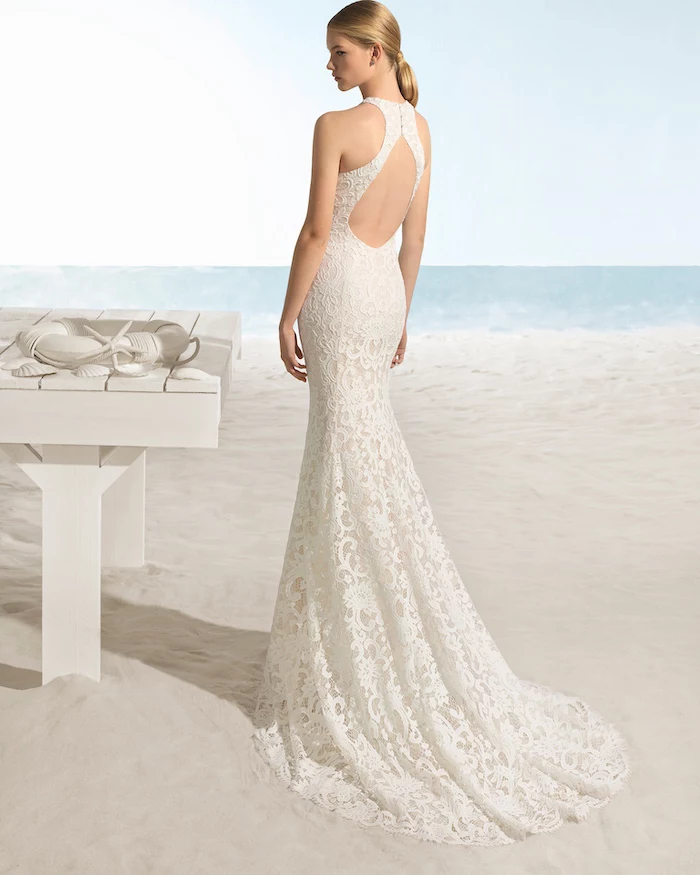
Worried about sustainability?
Look for dresses made from eco-conscious materials. TENCEL™ Lyocell, for example, is derived from sustainable wood sources and is known for its softness, strength, and breathability—making it an incredible, earth-friendly choice for a beach gown. Brands like Reformation and Wear Your Love are leading the way in stylish, sustainable bridalwear.
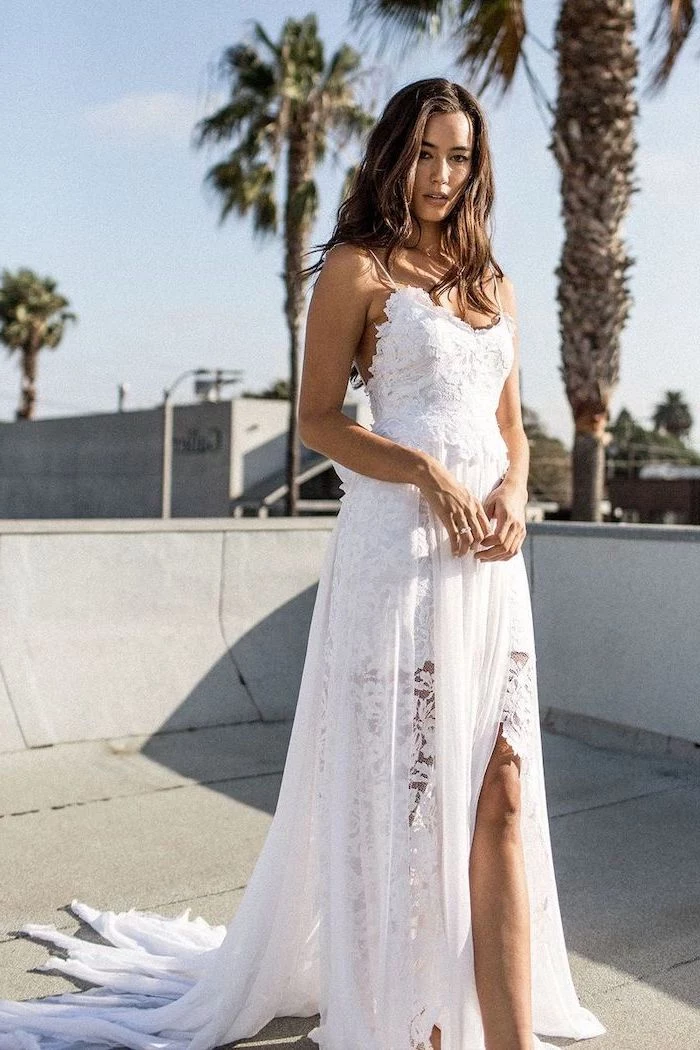
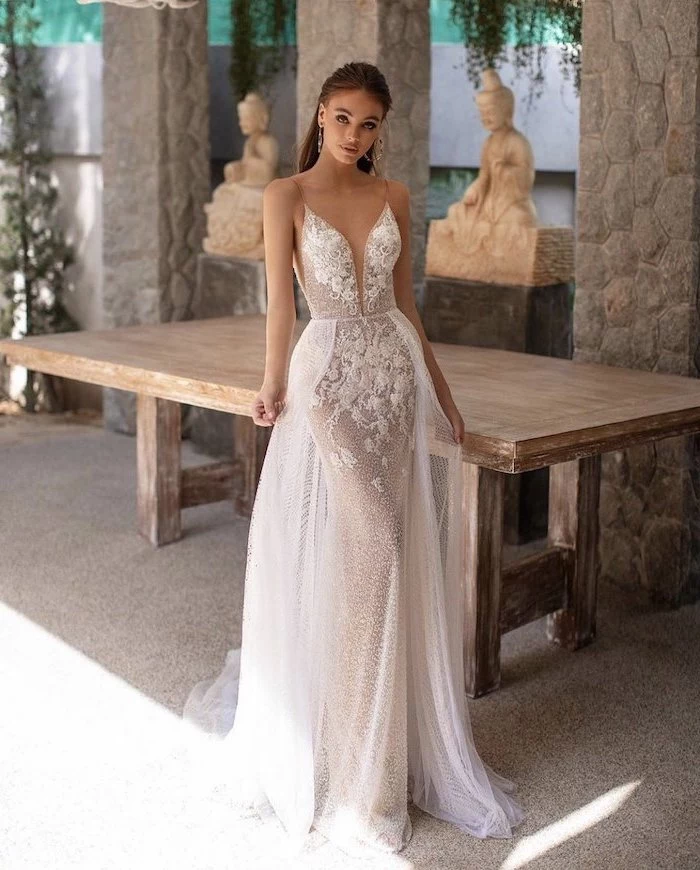
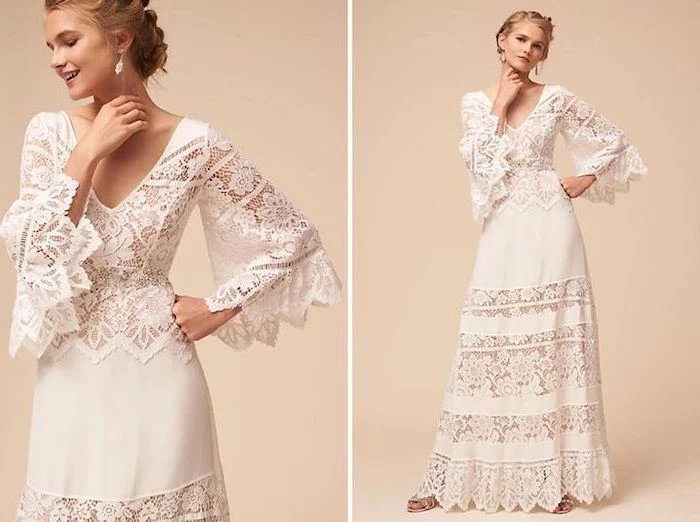
For the after-party: Consider a ‘bridal bathing suit’ or a chic white one-piece to wear under a sheer kaftan. It’s perfect for a late-night dip in the ocean or a bonfire on the sand, continuing the celebration in true beach style.
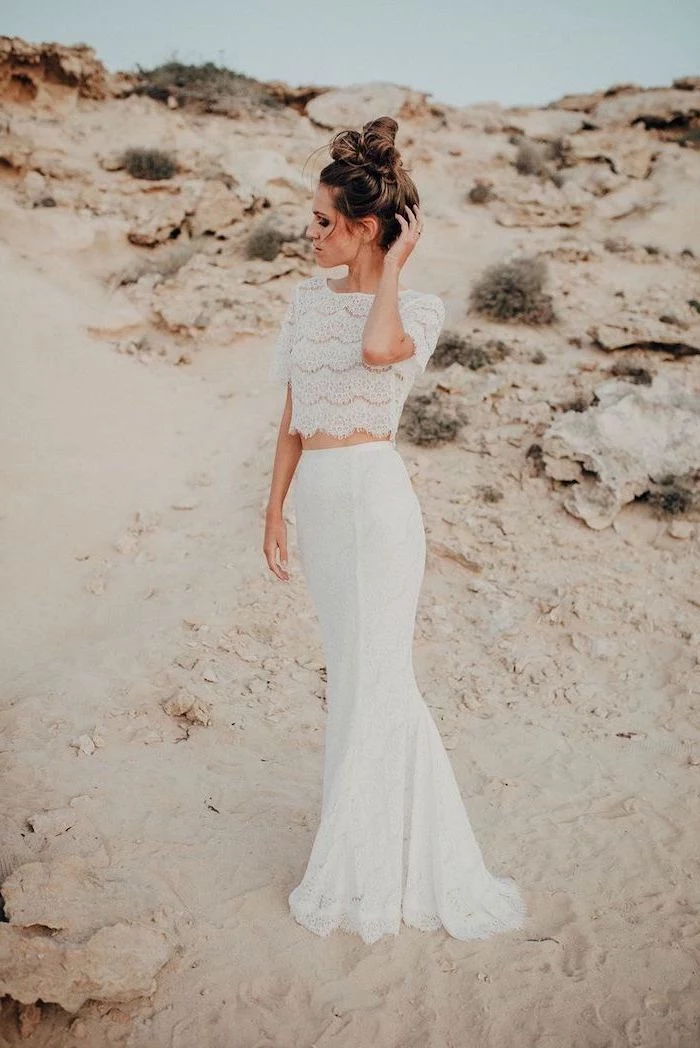
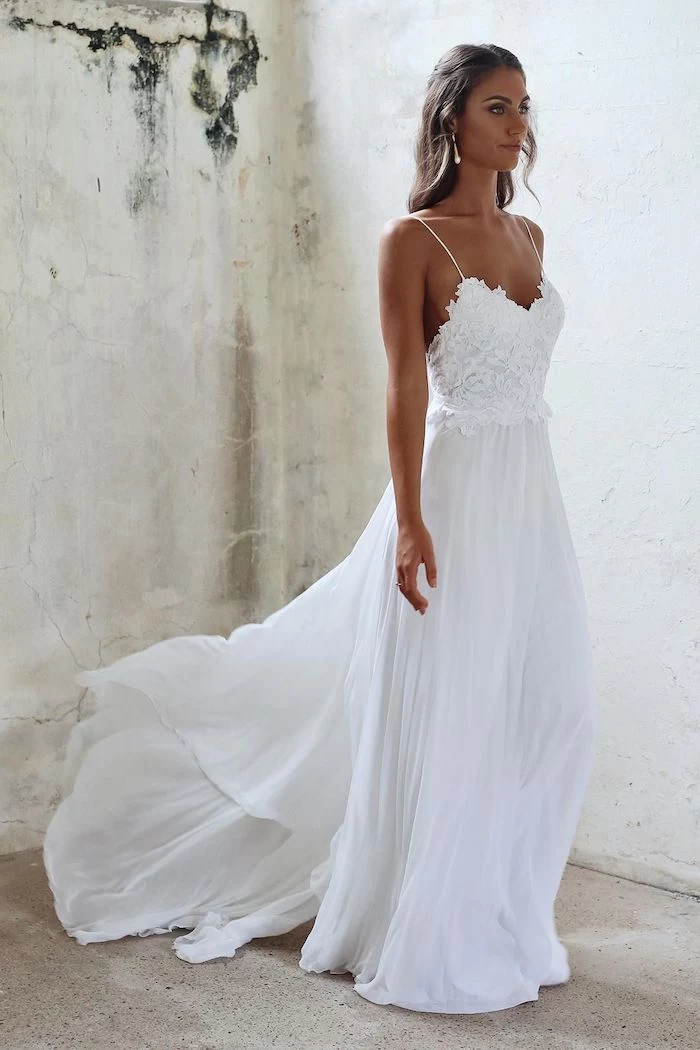
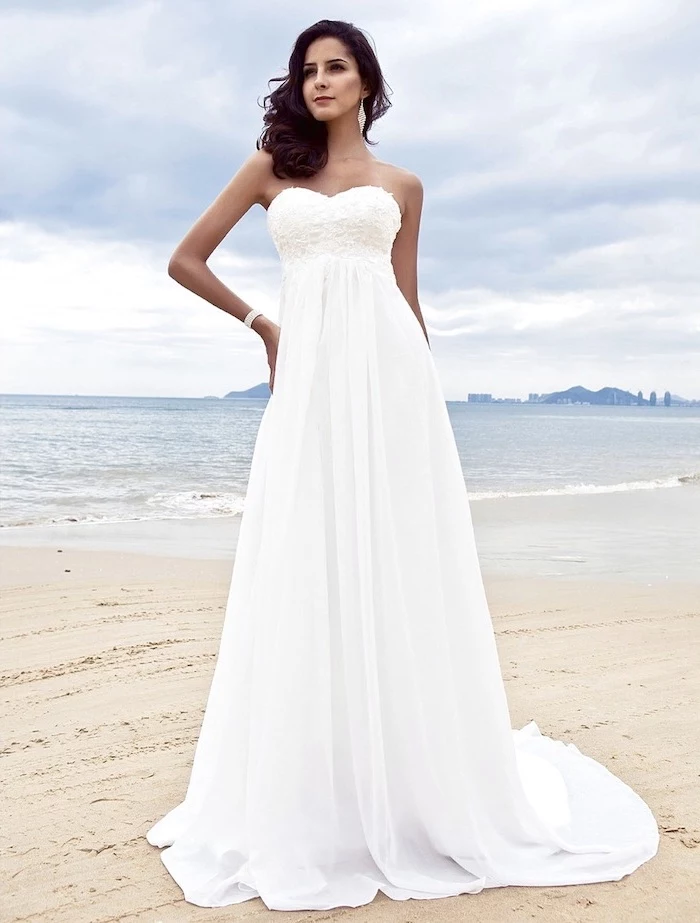
I chose a dress from the brand ‘Daughters of Simone’ because their crochet lace felt so authentic and comfortable. I didn’t want to feel like I was playing dress-up; I wanted to feel like myself, but on my best day. It was perfect for our Tulum ceremony.
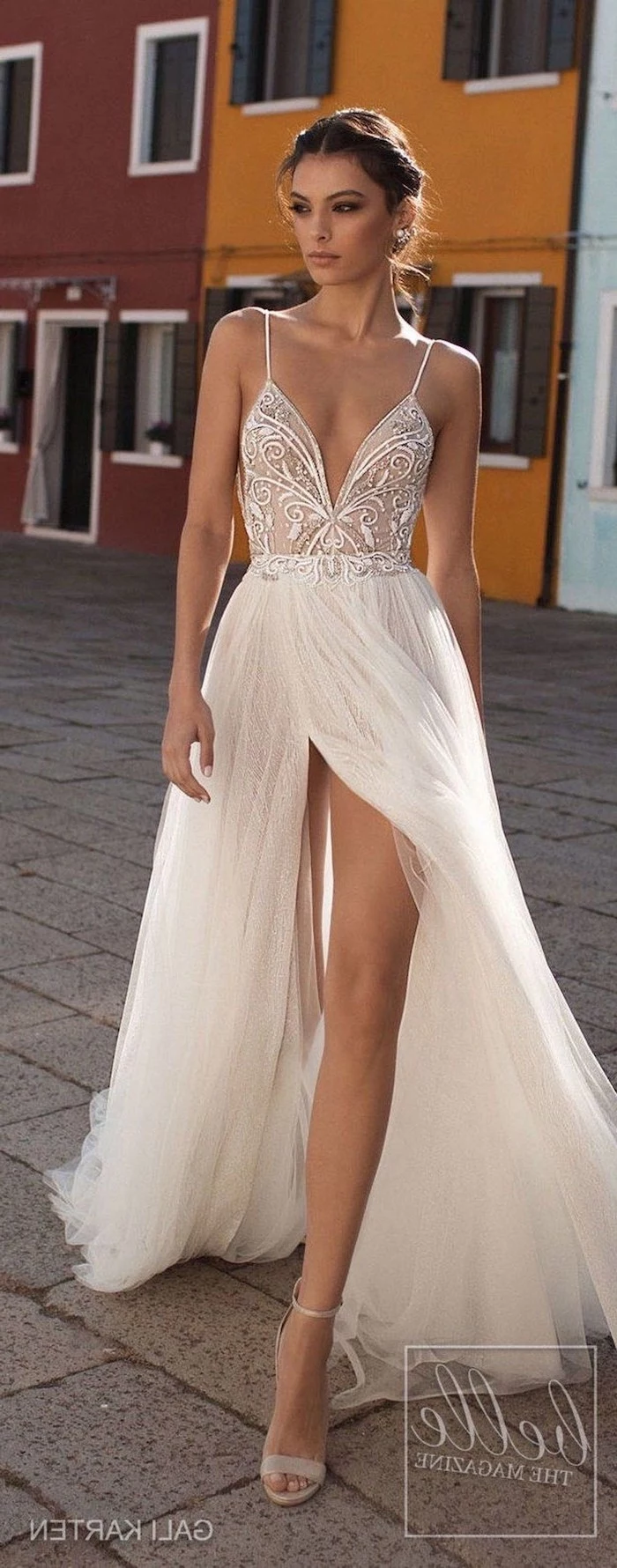
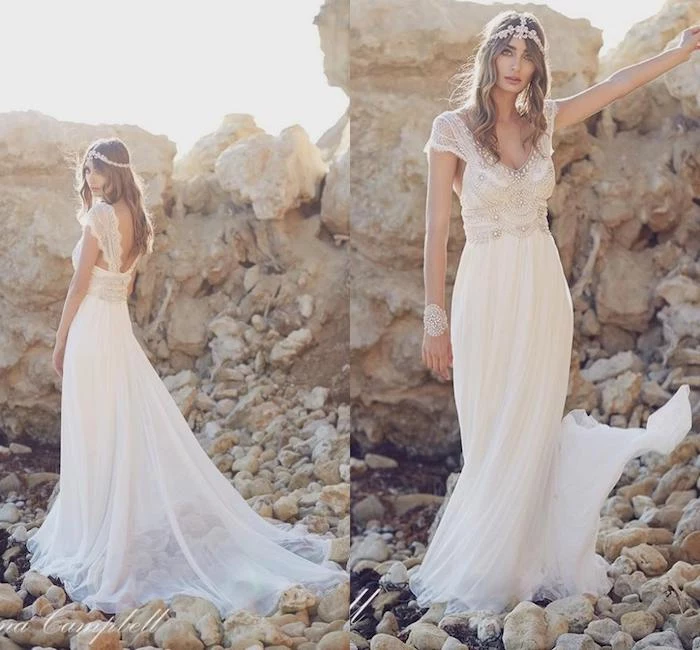
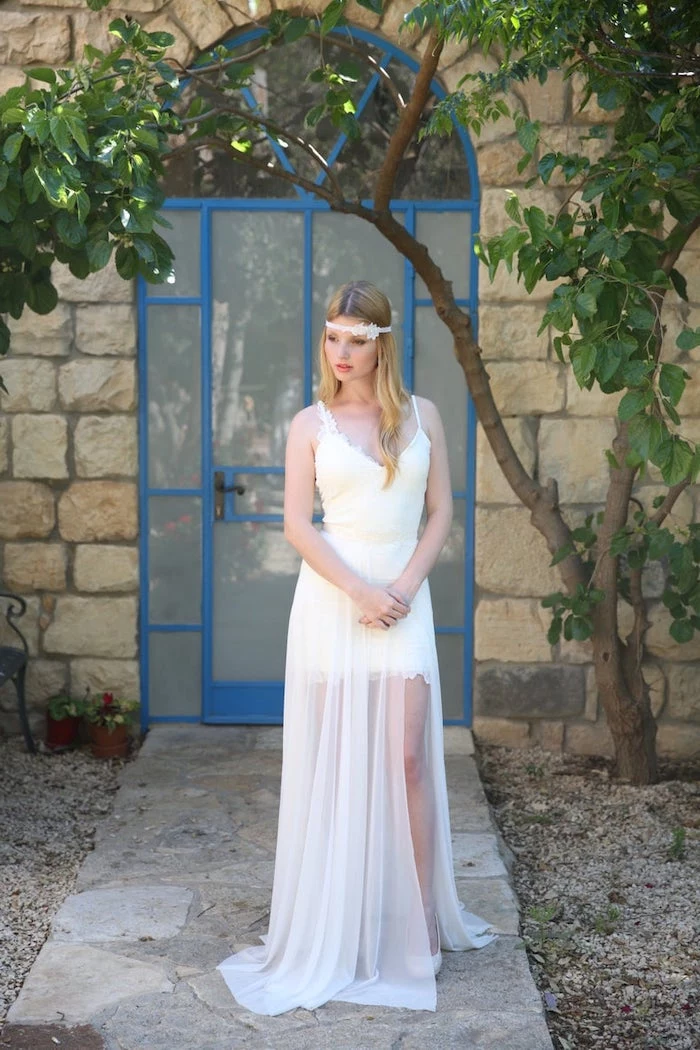
The ‘Grecian Goddess’ look is a beach wedding classic for a reason. It’s defined by draping, one-shoulder necklines, and empire waists. Fabrics like silk georgette or jersey crepe are perfect for this style, as they fall beautifully and create an effortless, statuesque silhouette that looks right at home by the sea.
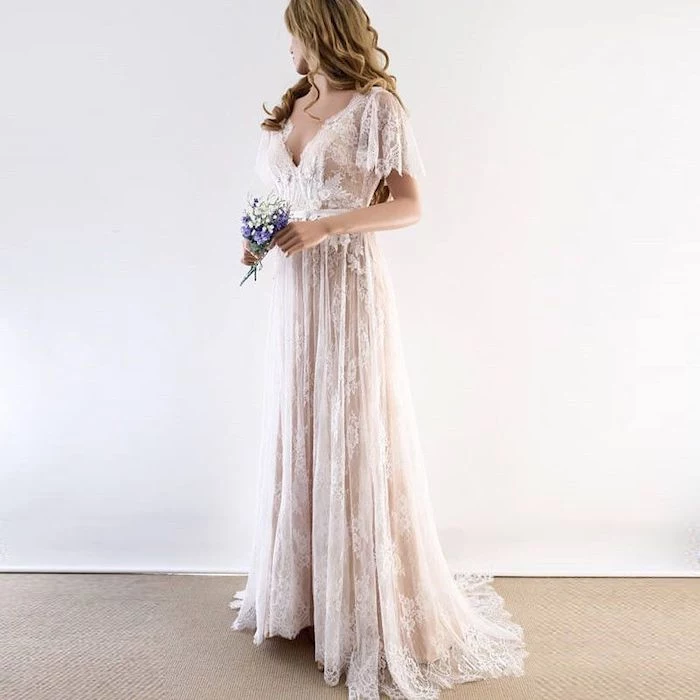
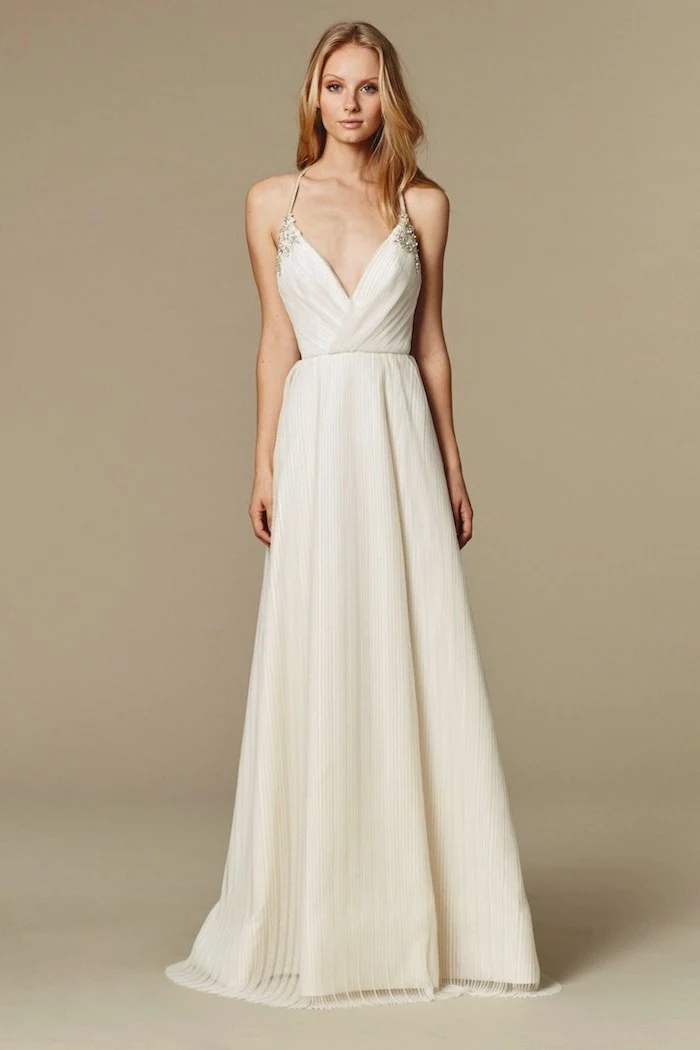
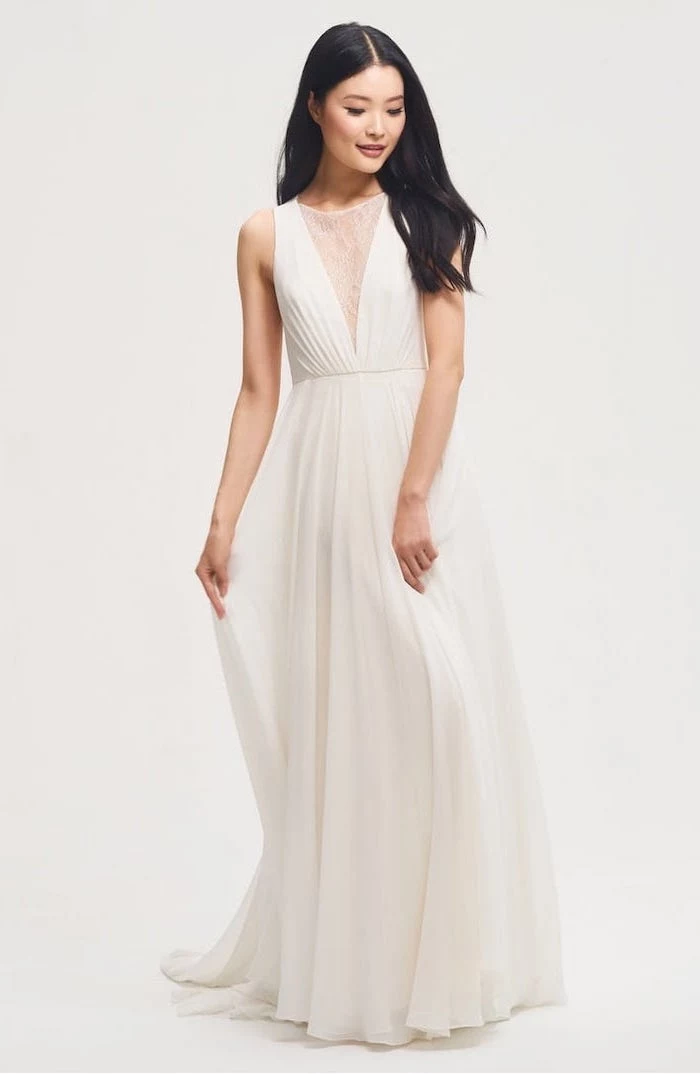
Plan for your entourage: The beach environment affects your bridesmaids’ dresses too. Opt for similar lightweight, breathable fabrics for them. Mismatched dresses in a coordinated color palette of sea glass, coral, and sand tones look fantastic in photos and allow your friends to choose a style that suits them best.
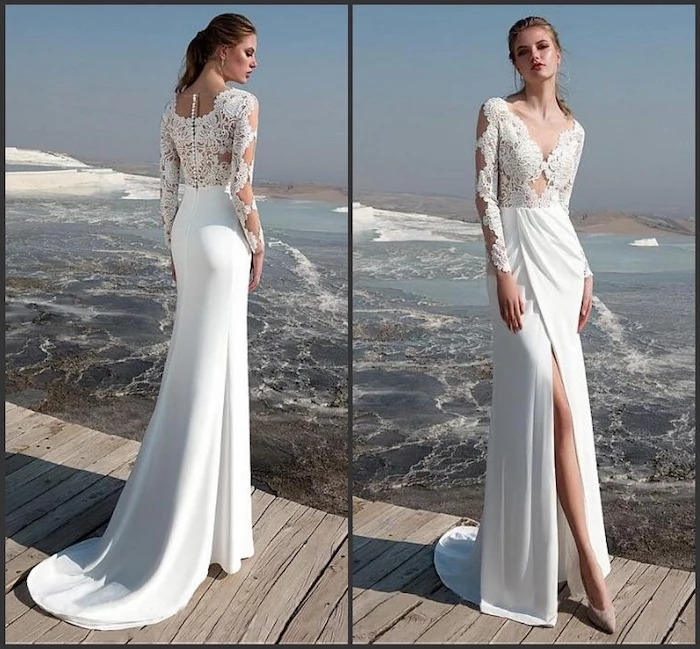
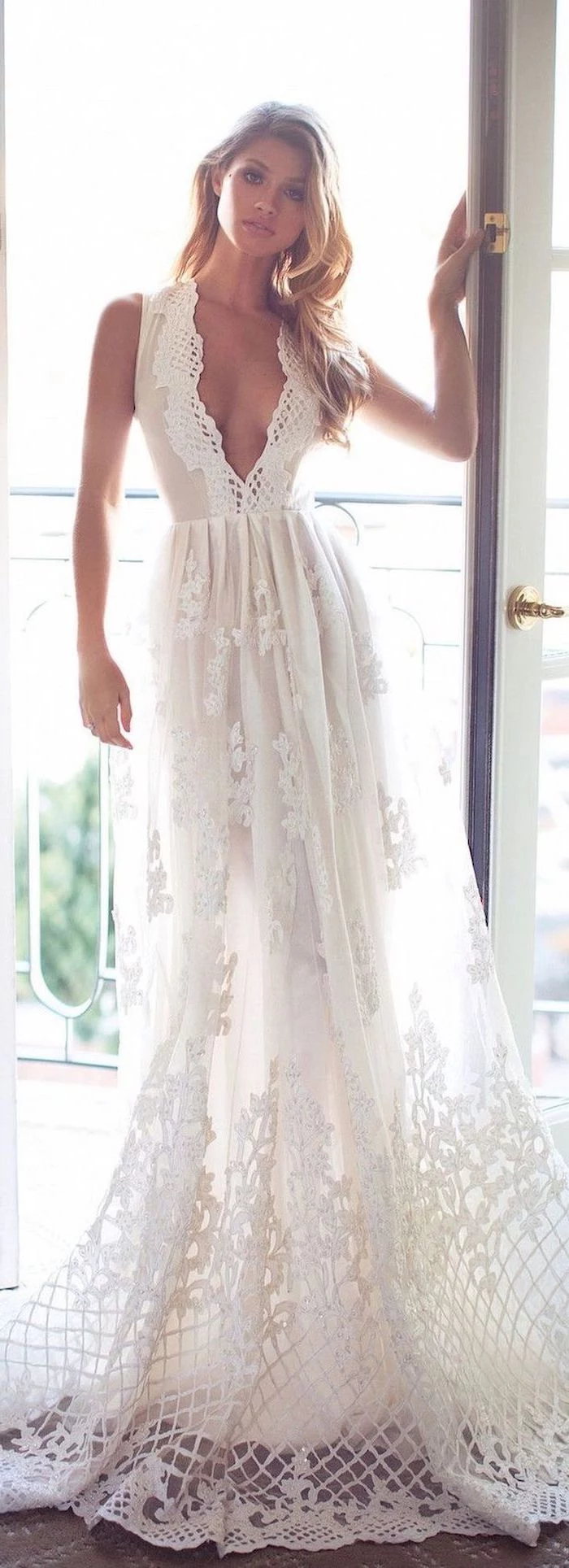
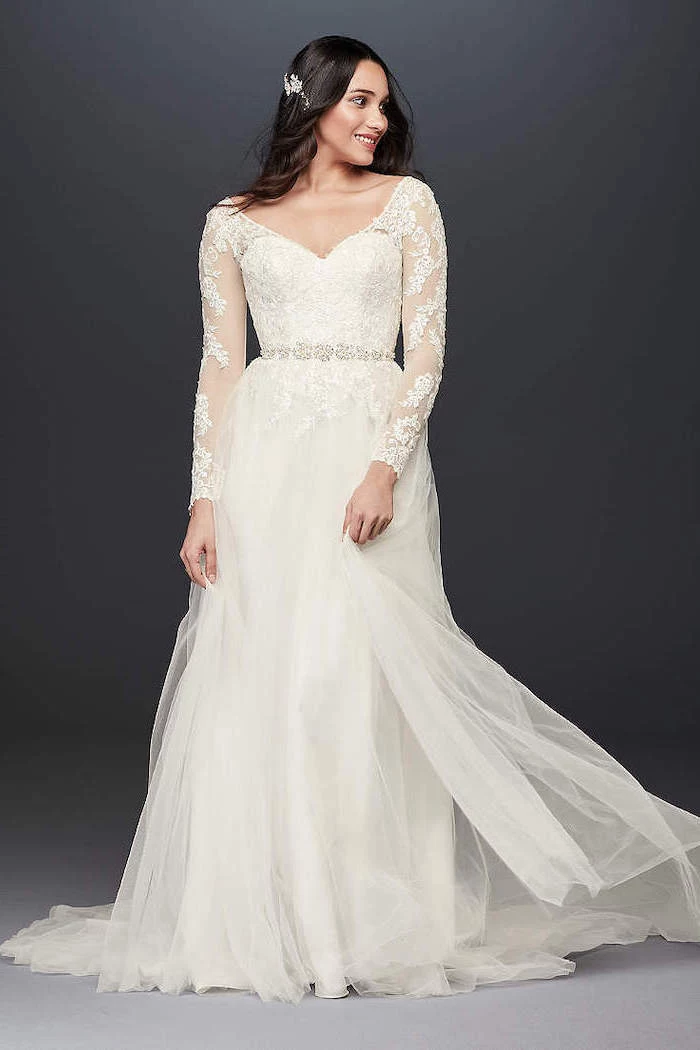
Post-Wedding Care: Don’t let your dress sit with sand and salt in it. As soon as possible, have it professionally cleaned by a specialist who understands delicate fabrics. They’ll need to gently remove all the sand particles before cleaning to avoid abrasion. Ask about preservation services if you plan to keep it as an heirloom.
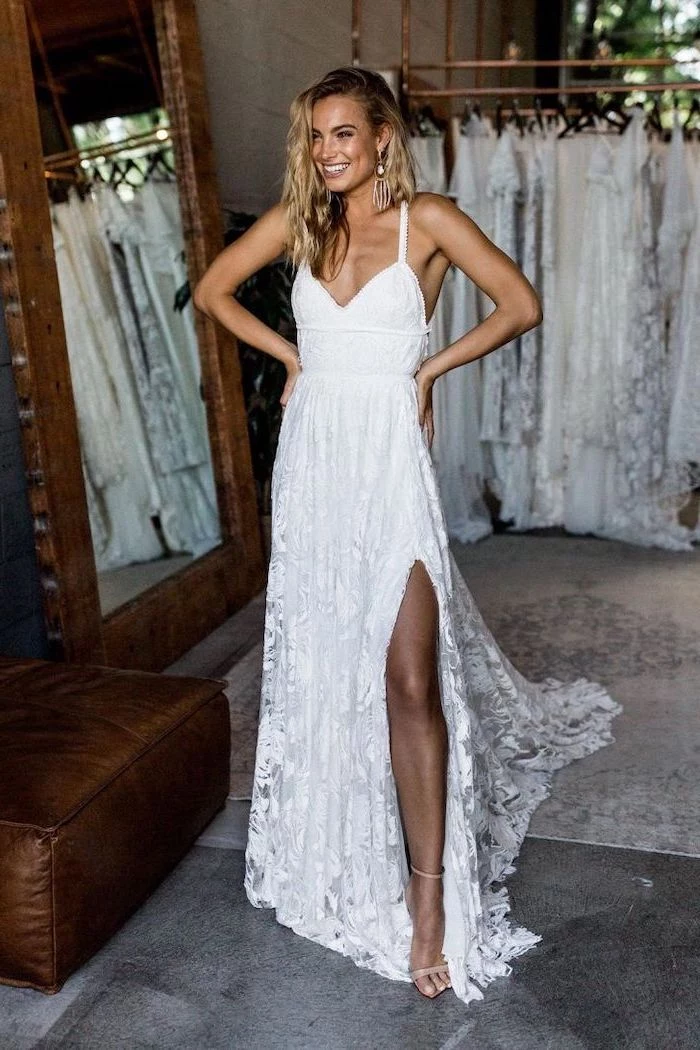
The back of your dress is just as important as the front, especially since guests will be watching it throughout the ceremony. A low, scooping back, intricate strap details, or a ‘backless’ illusion panel can add a stunning ‘wow’ factor that is both beautiful and practical for staying cool.



